The Kingdom of Heaven Belongs to Such as These
Oil and White Gold Leaf on Canvas, 3' by 5', 2017
"but Jesus said, 'Let the little children come to me and do not hinder them, for to such belongs the kingdom of heaven.' And he laid his hands on them and went away." Matthew 19:14-15
Let the Little Children Come To Me
Oil on Canvas, 30'' by 24'', 2018
"Then children were brought to him that he might lay his hands on them and pray. The disciples rebuked the people," Matthew 19:13 ESV
The Heavenly Banquet
Oil, Silver, Gold, and Copper Leaf on Canvas, 5' by 3', 2016
Here the disciples are reclining at table, enjoying the Passover meal. Christ has just told them “But I say unto you, I will not drink henceforth of this fruit of the vine, until that day when I drink it new with you in my Father's kingdom” Matthew 26:29 KJV. Jesus is gazing out the window, looking to the Heavenly Jerusalem, a beautiful castle church. Yet something supernatural is taking place, the resurrected glorified Christ is coming in as beams of light to embrace, kiss, and feed one of the disciples with His own body and blood. If you look closely, you will see that the foretaste of the feast to come is present. The disciple receiving Christ personally is peering through the wound in His hand, and gazing upon the sacred food. In the same way, may you see yourself as the beloved in the Lord in this holy meal.
Christ’s wound is silver leaf, and it reflects outward. Our own reflection shows up in the wounds of Christ, where we are safe inside. The background is made of gold, silver, and copper leaf, representing the House of Living Stones that all Christians make up. The stones are sealed together with the blood of Jesus.
The Vow I Made Was For Her
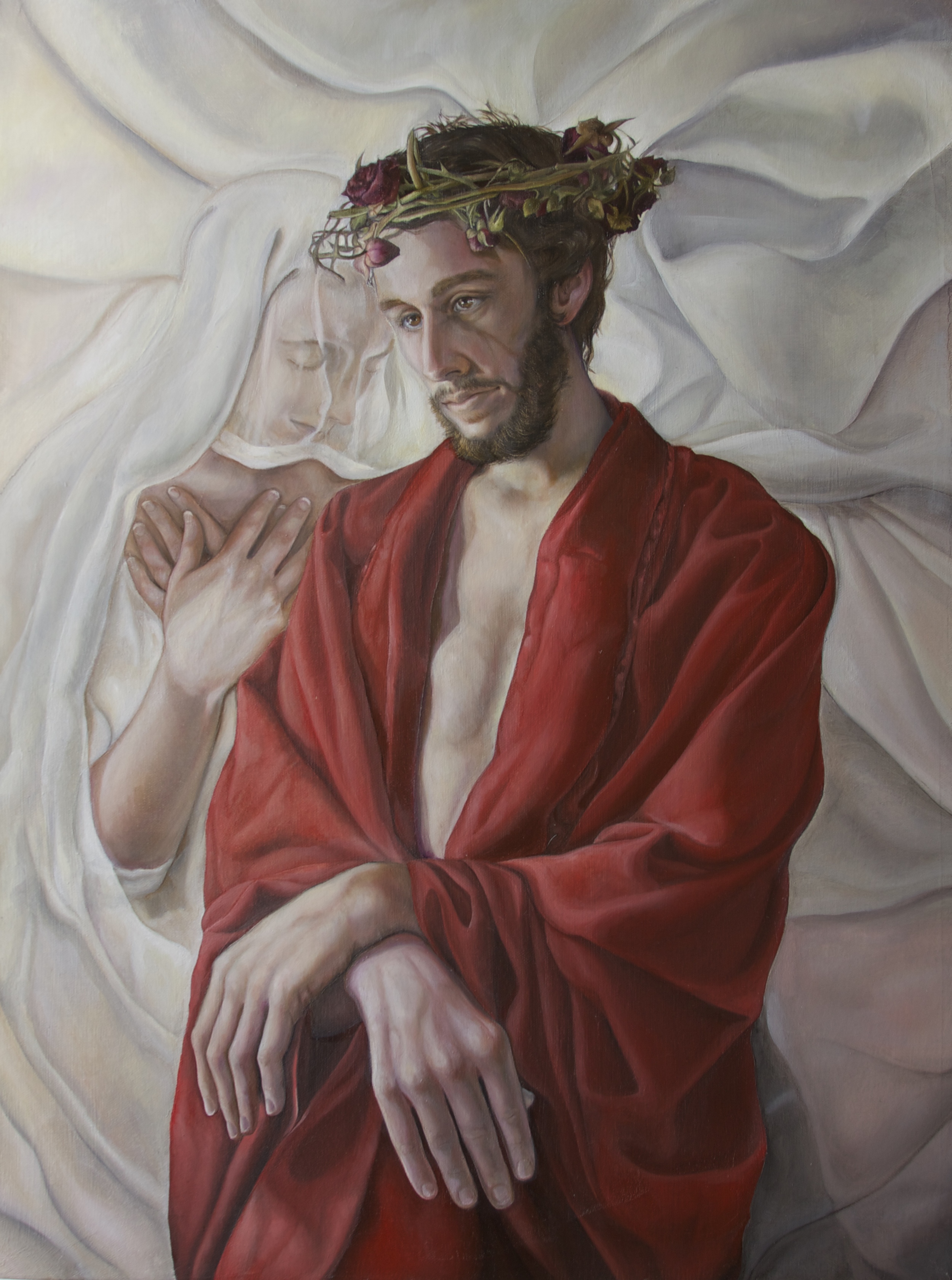
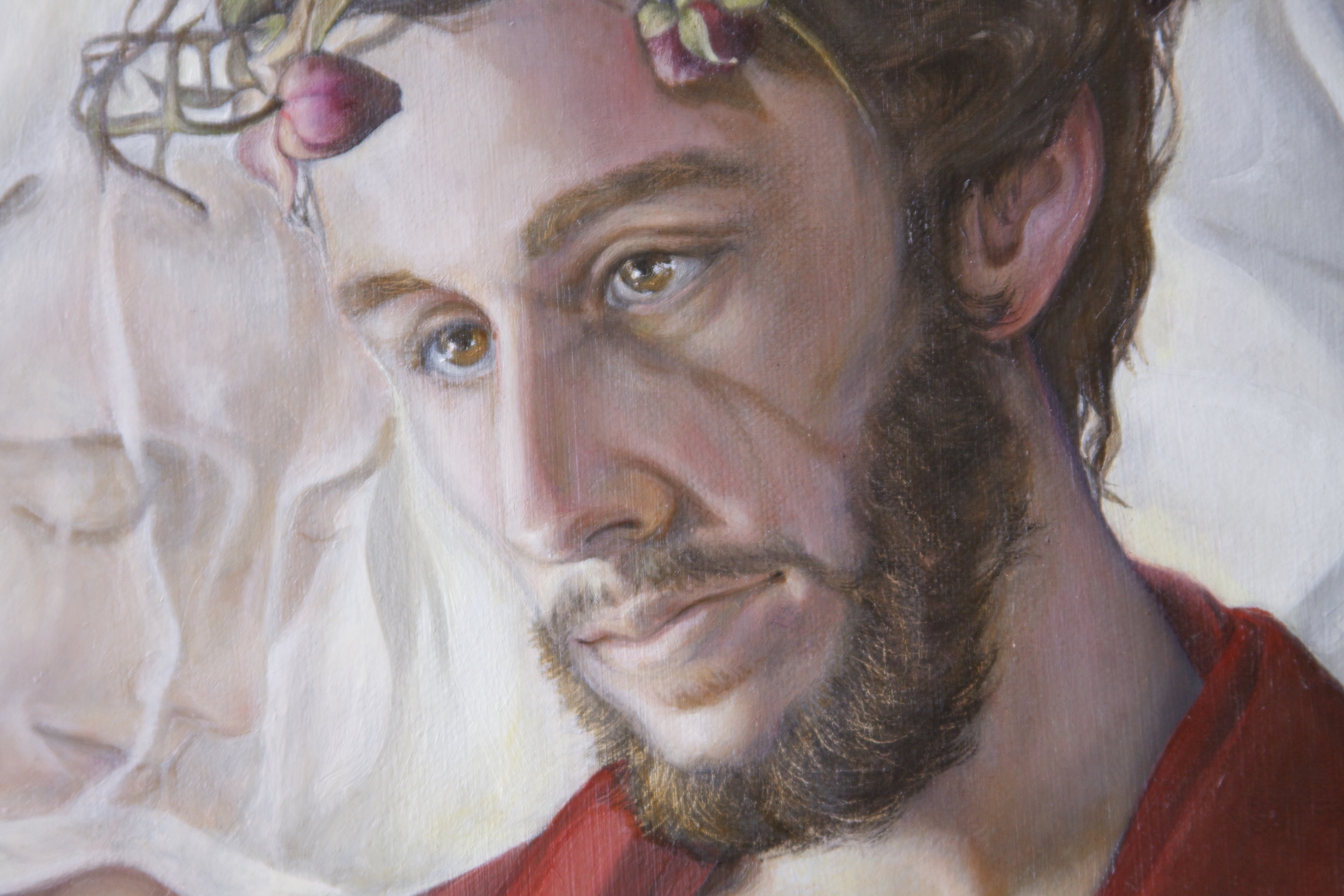
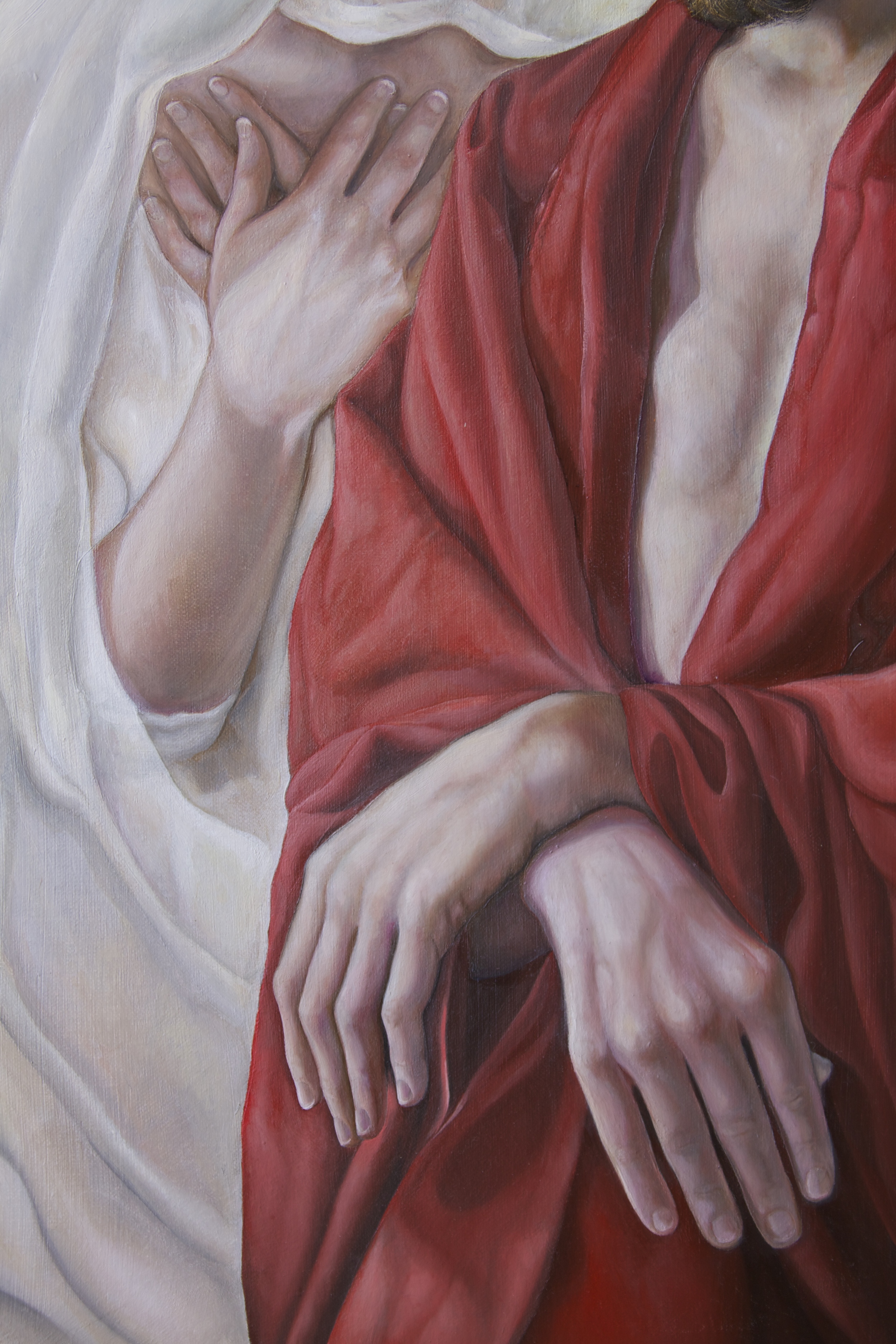
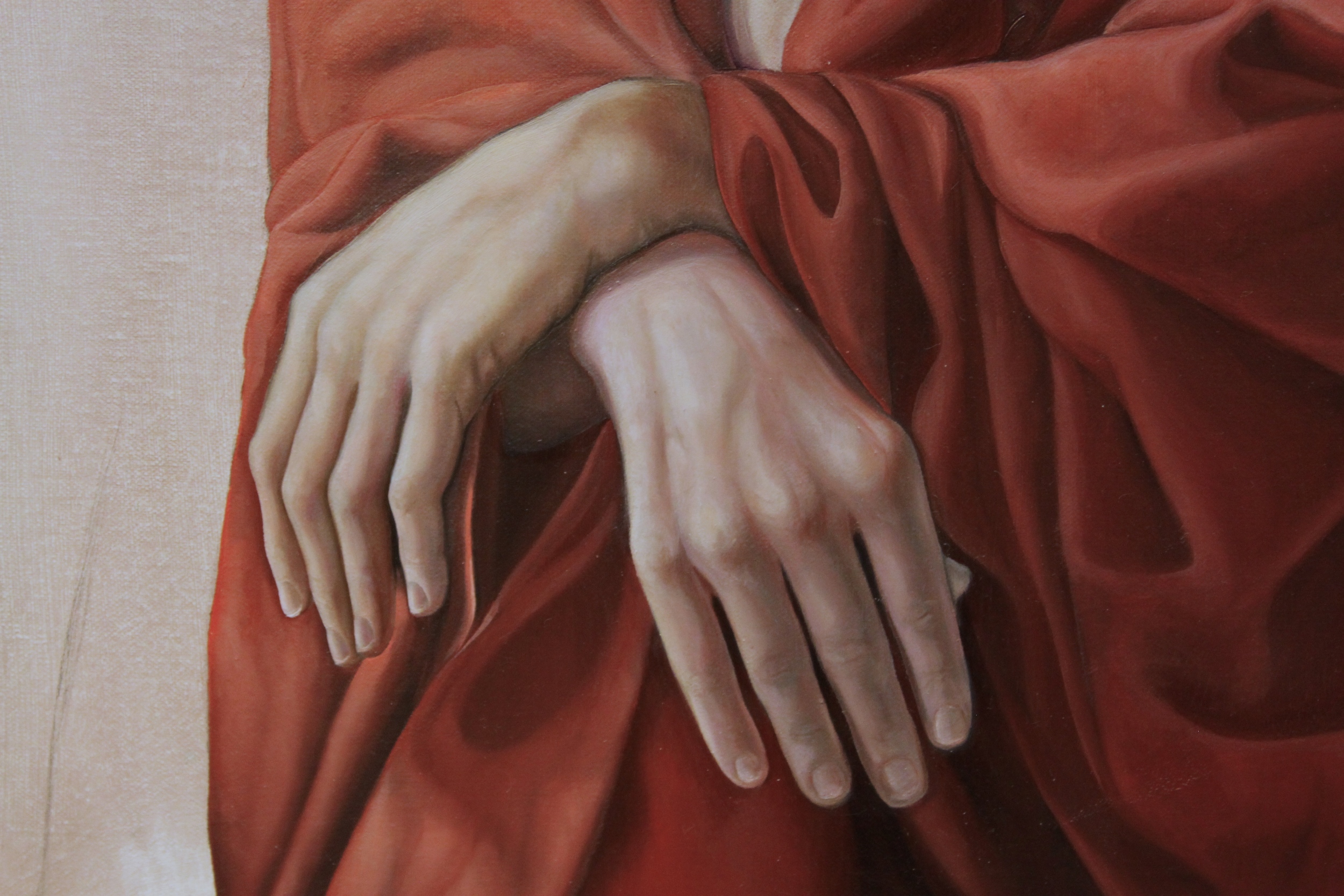
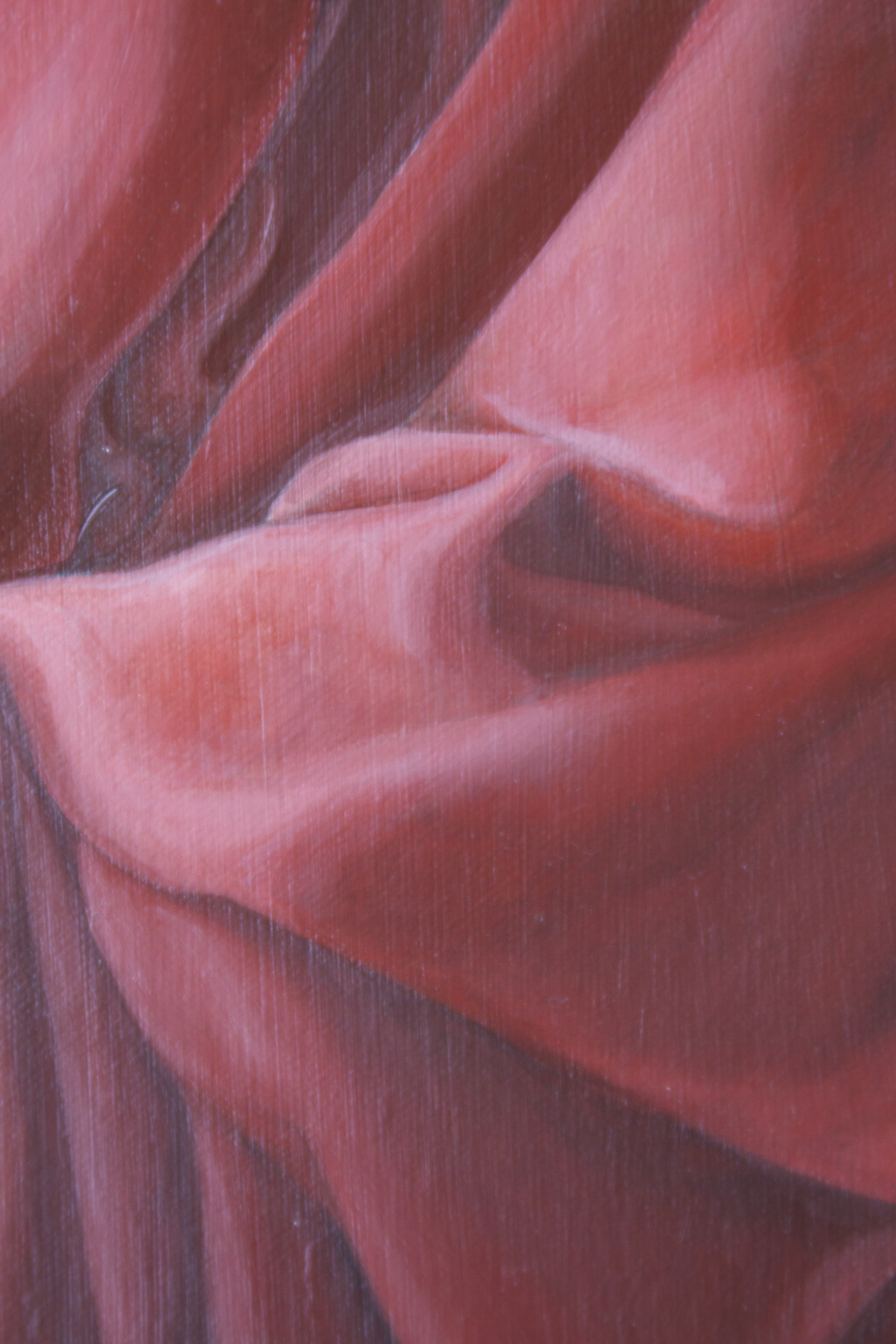
“Husbands, love your wives, as Christ loved the church and gave himself up for her, that he might sanctify her, having cleansed her by the washing of water with the word, so that he might present the church to himself in splendor, without spot or wrinkle or any such thing, that she might be holy and without blemish.”
The Shulamite
Oil and White God Leaf on Canvas, 14'' by 18'', 2018
“The third incomparable benefit of faith is that it unites the soul with Christ as a bride is united with her bridegroom. By this mystery, as the Apostle teaches, Christ and the soul become one flesh (Eph. 5:31-32). And they are one flesh and there is between them a true marriage – indeed the most perfect of all marriages, since human marriages are but poor examples of this one true marriage – it follows that everything they have they hold in common, the good as well as the evil. Accordingly the believing soul can boast of and glory in whatever Christ claims as his own. Let us compare these and we shall see inestimable benefits. Christ is full of grace, life, and salvation. The soul is full of sins, death, and damnation. Now let faith come between them and sins, death, and damnation will be Christ’s while grace, life, and salvation will be the soul’s; for if Christ is a bridegroom, he must take upon himself the things which are his bride’s and bestow upon her the things that are his. If he gives her his body and very self, how shall he not giver her all that is his? And if he takes the body of the bride, how shall he not take all this is hers?” (Luther 14)
Luther, Martin. “Christian Liberty”. Fortress Press, Philadelphia, PA, print.
My Beloved Is Gone Down Into His Garden
Oil, Silver, and Gold Leaf on Canvas, 30'' x 40'', 2016
Mary is weeping at the tomb, searching for Christ, whom she came to anoint. She has a sinking feeling in her stomach, thinking Jesus is gone forever. She does not know yet the empty tomb means He is alive again. Here is the moment before she sees Jesus. He is on the other side of the lilies where you stand, watching her and ready to speak and to comfort her. In Song of Solomon 6:2, the Shulamite remembers, “My beloved is gone down into his garden, to the beds of spices, to feed in the gardens, and to gather lilies” KJV. Jesus was buried in a garden, His resurrection meant to herald the coming new creation. The creation He is the firstborn of.
The Sword Will Pierce Your Own Soul As Well
“Indeed, as a result of him the thoughts of many hearts will be revealed – and a sword will pierce your own soul as well!”
This Madonna and Child is a representation of the Incarnation. Christ Jesus is true man, born of the Virgin Mary to redeem mankind from sin. The Christ child was often depicted nude to counteract the gnostic teachings that denied the coming of the Savior into flesh. Upon His circumcision, Simeon prophesied to Mary that a sword would pierce her heart; she would experience suffering as her son would.
Jesus is sitting in Mary’s lap; His pose imitates her posture. There is something strange in this painting however. Is she pulling her veil to reveal her son in her lap, or to reveal His fate in the background? The answer is both. The young Jesus points toward the upper right hand corner of the painting, with a sense of knowing in His eyes. Christ Jesus was born to die, as a man for the salvation of us all. Mary clings to the cross, piercing her own soul as well.
Man of Sorrows
Oil on canvas, 8" x 10", 2012
Christ the Man of Sorrows in Isaiah, grieves over our trespasses.
In this small portrait, shadows from the crown of thorns cast dark lines upon the Lord’s face. His eyes are skull-like hollows, red and swollen from weeping. Only three colors are used: black, red, and white. The black refers to our sin, red symbolizes Christ’s blood, and white represents forgiveness. Jesus offers up His life willingly without complaint for our sin.
O Sacred Head, Now Wounded
O sacred head, now wounded,
With grief and shame weighed down,
Now scornfully surrounded
With thorns, your only crown
Oh sacred head what glory
And bliss did once combine;
Though now despised and gory,
I joy to call you mine!
Unless A Grain Of Wheat

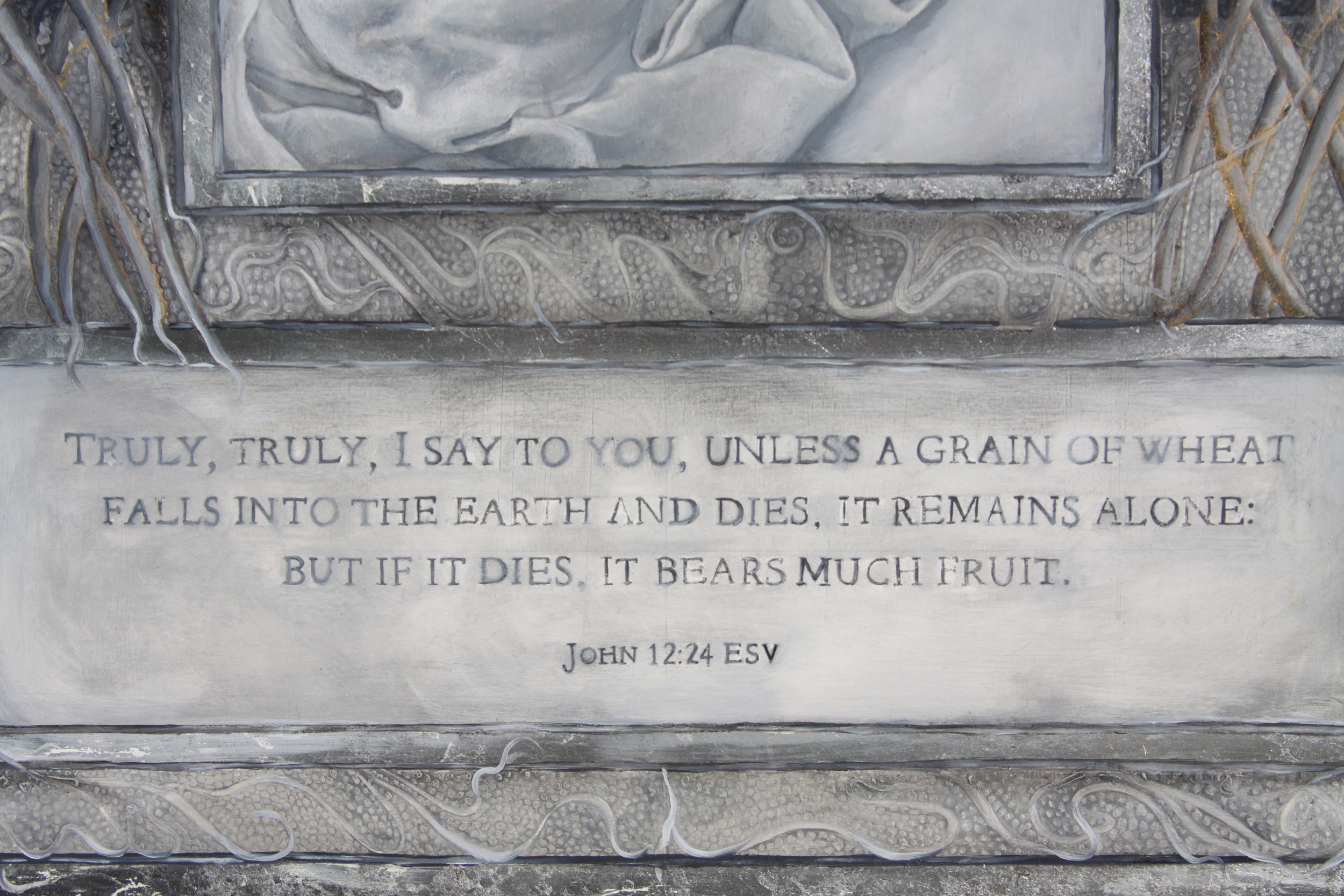
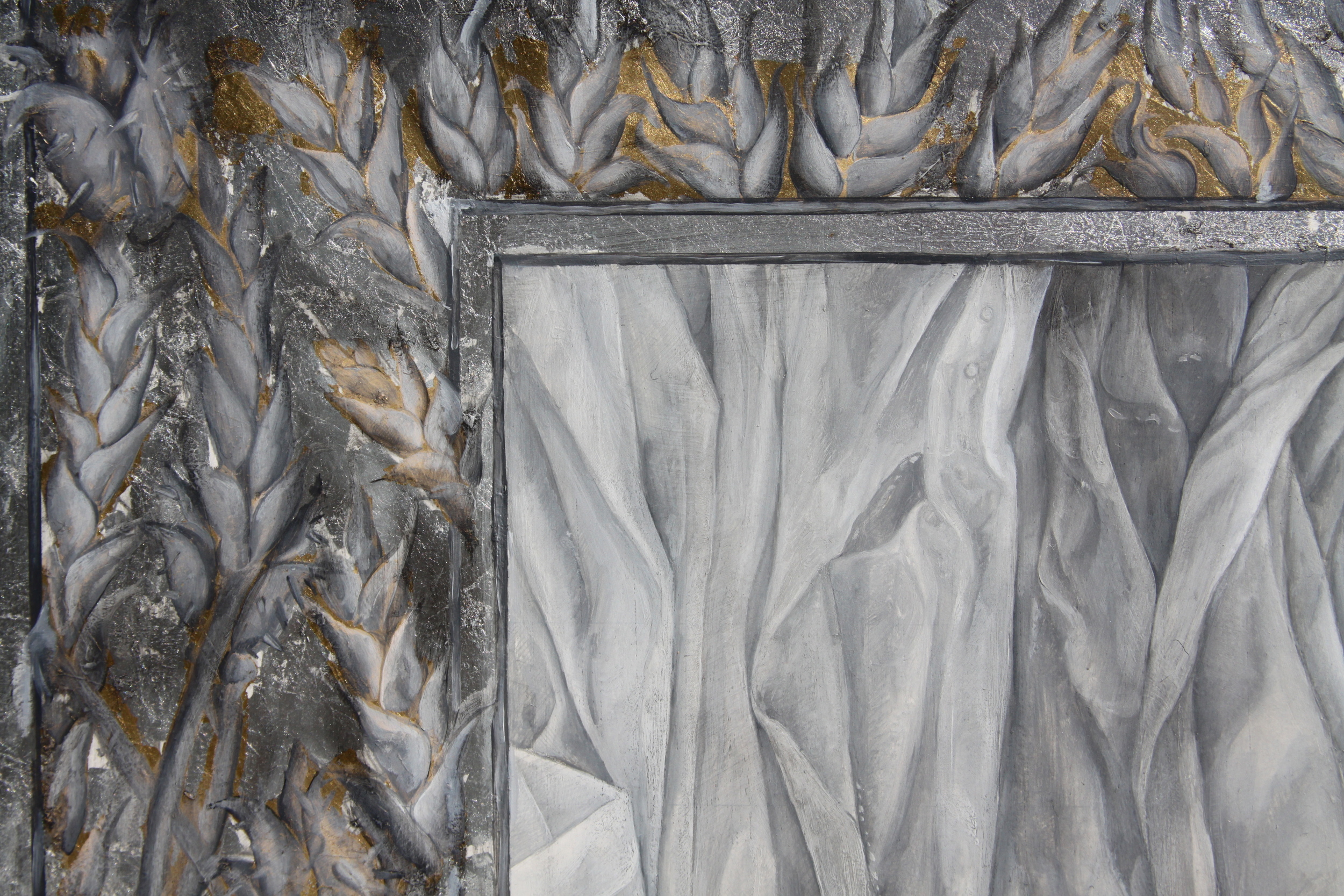

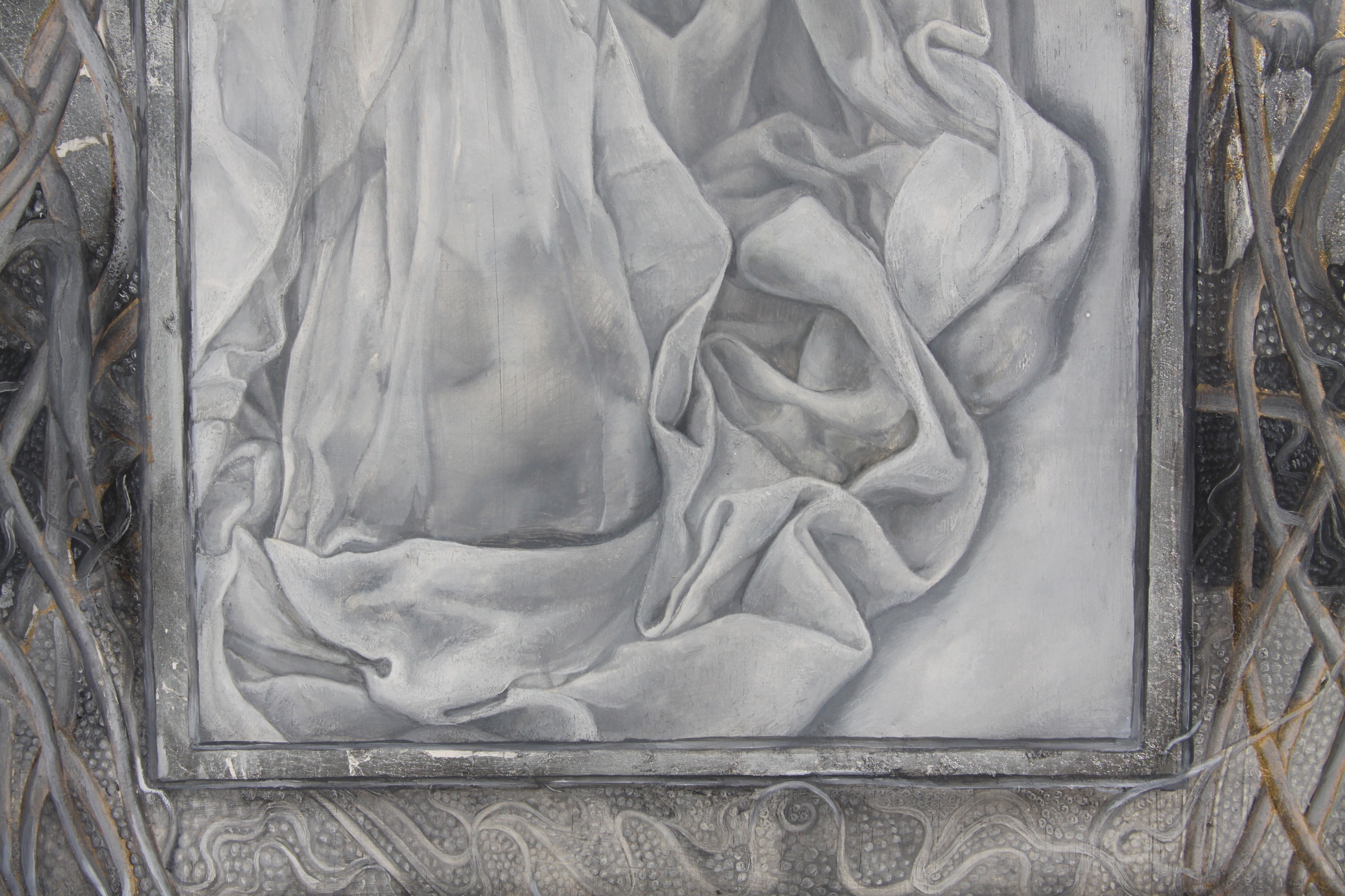

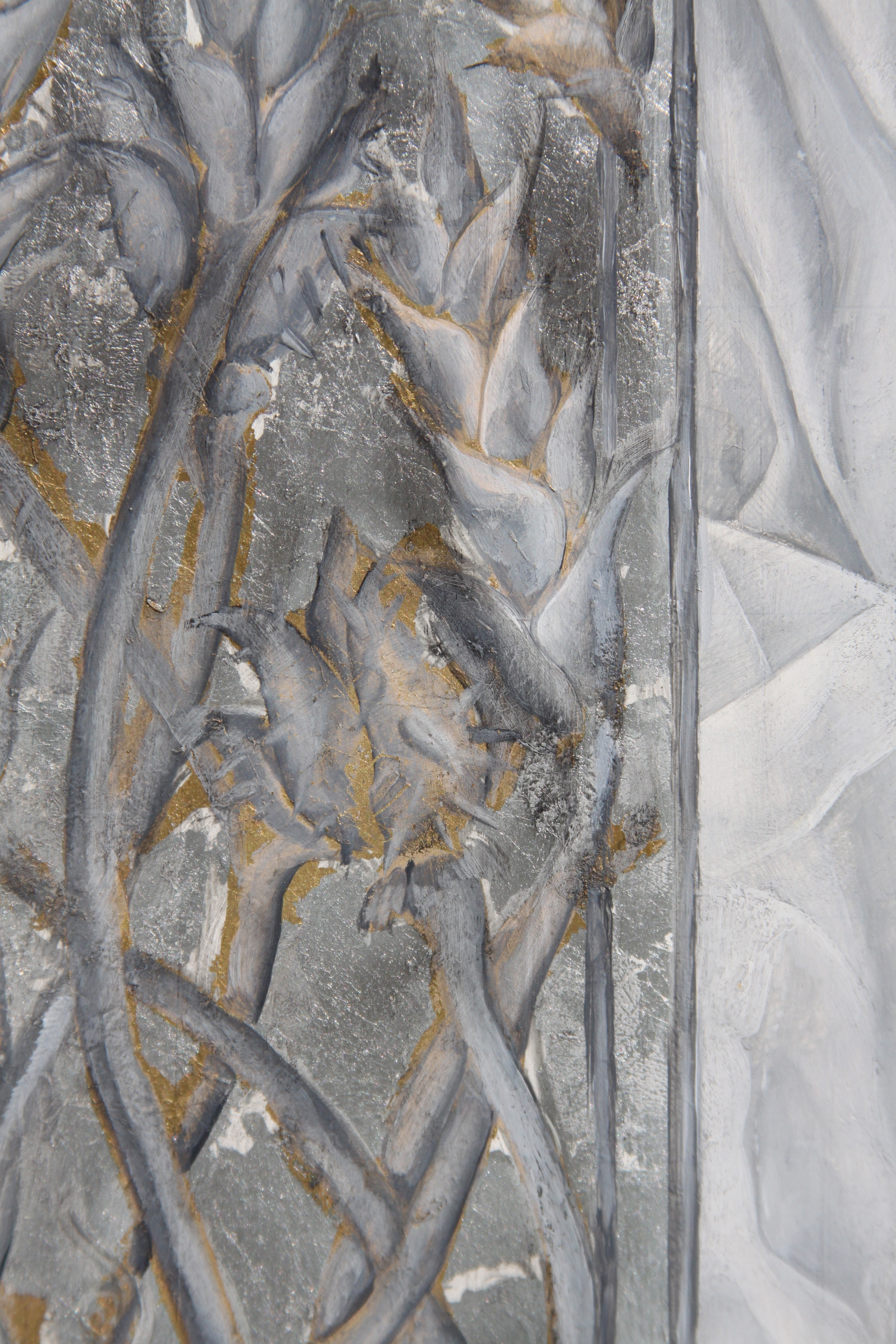

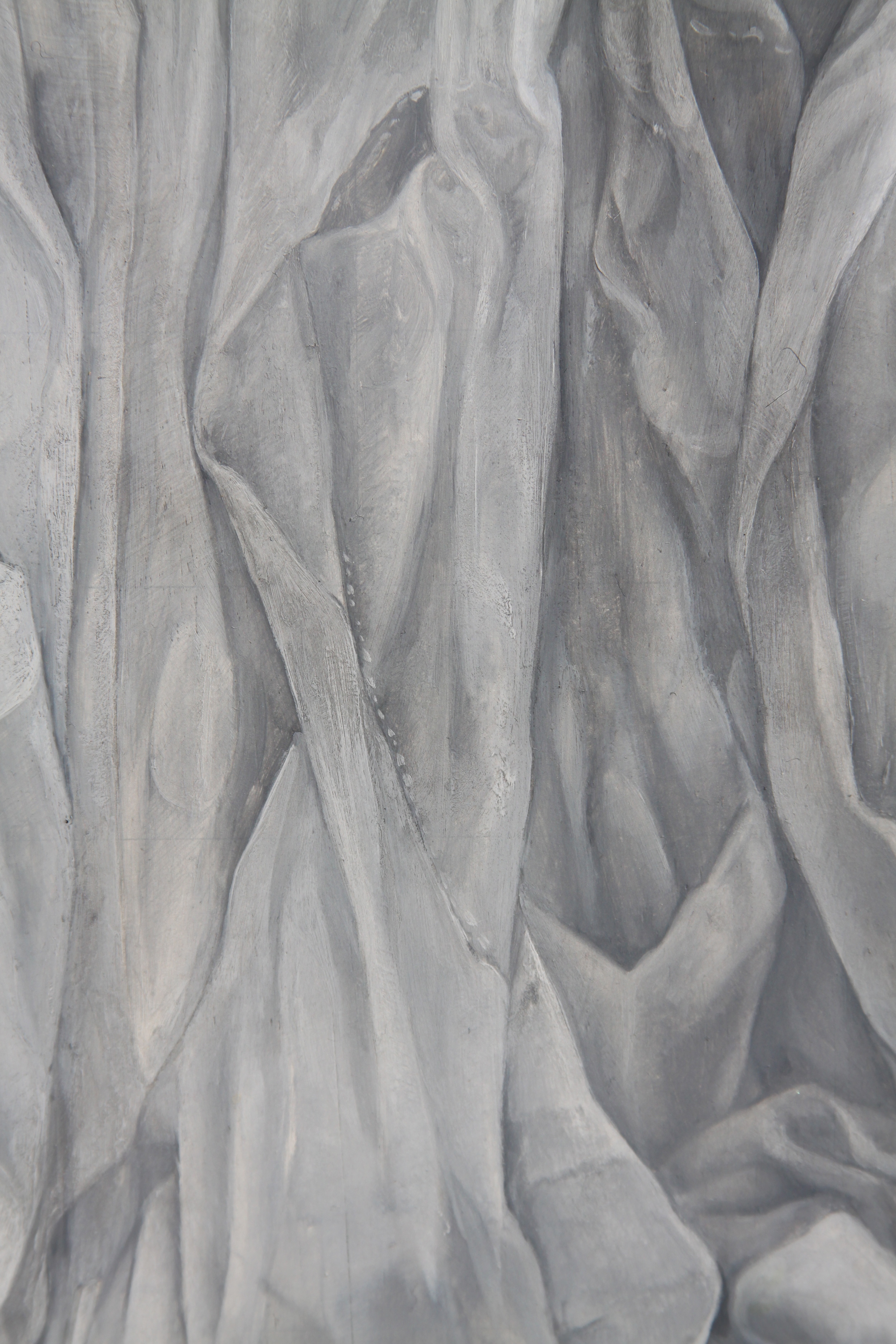

Oil on Panel, Silver and Gold Leaf, 12" x 16", 2012
“Truly, truly I say to you, unless a grain of wheat falls into the earth and dies, it remains alone; but if it dies it bears much fruit.”
When He was buried in the tomb, Christ died as the perfect seed to give life to many. His head is inverted beneath the soil, covered in a burial shroud. Beneath the ground with Him are hundreds of seeds, illuminated with the Gospel of peace.
On the outside of the central figure, are wheat and tares rising out of the soil. These are true and false doctrine growing side by side. To grow in the truth, we abide in God’s Word and fellowship with one another. The good seed, that is Jesus, will bear good fruit. When we die to self, we come alive in Christ, that others may live in Him also
The True Vine
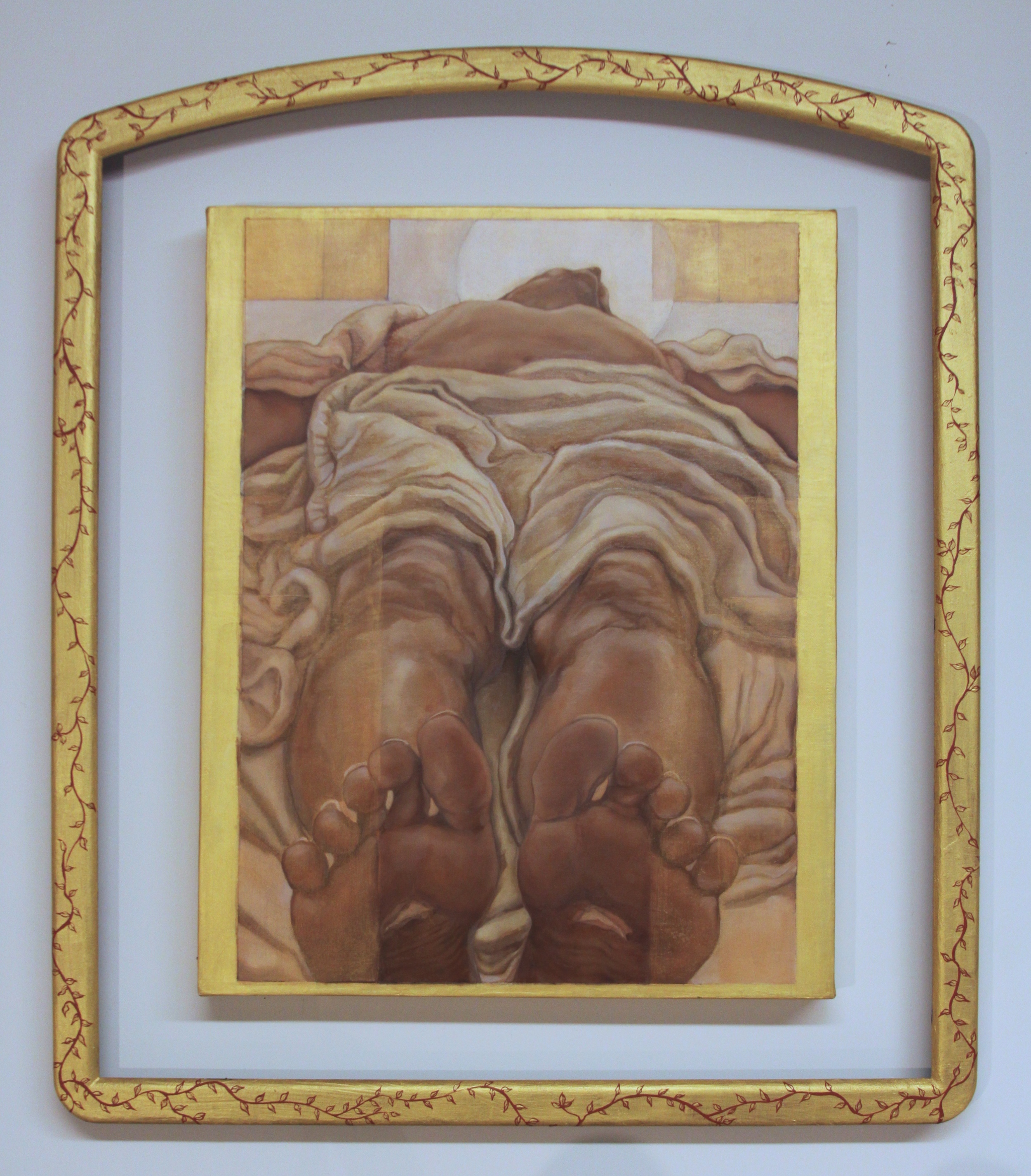
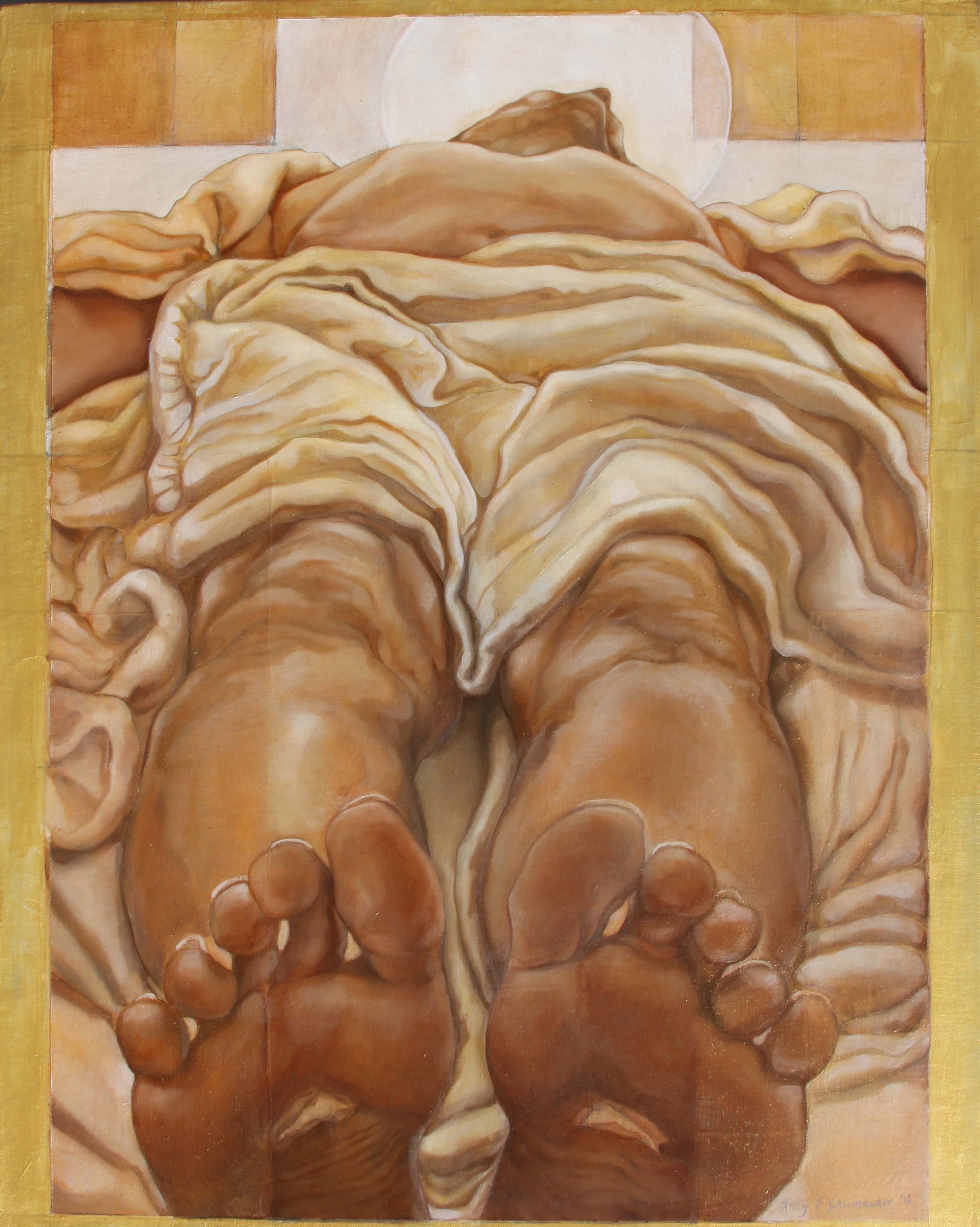
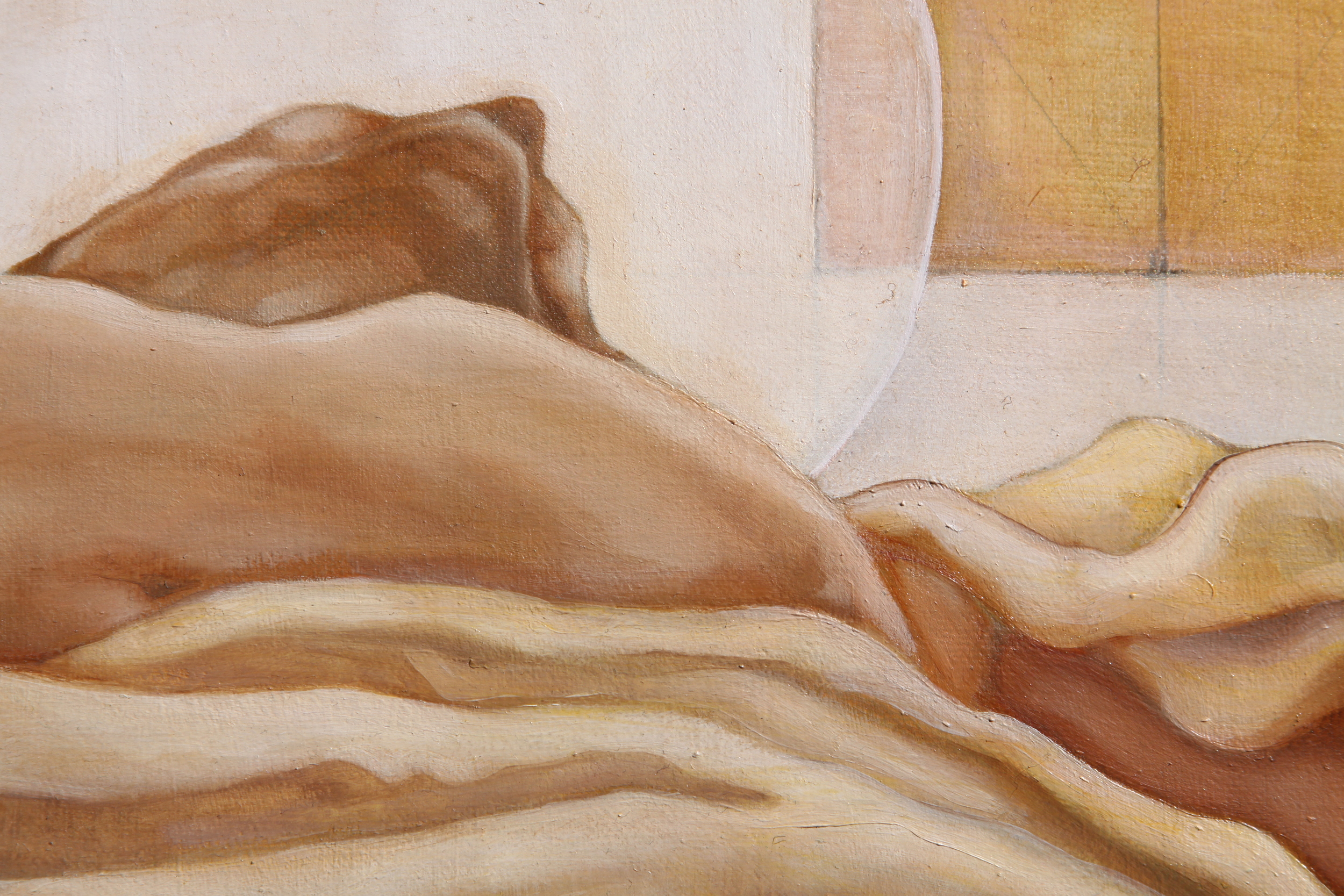
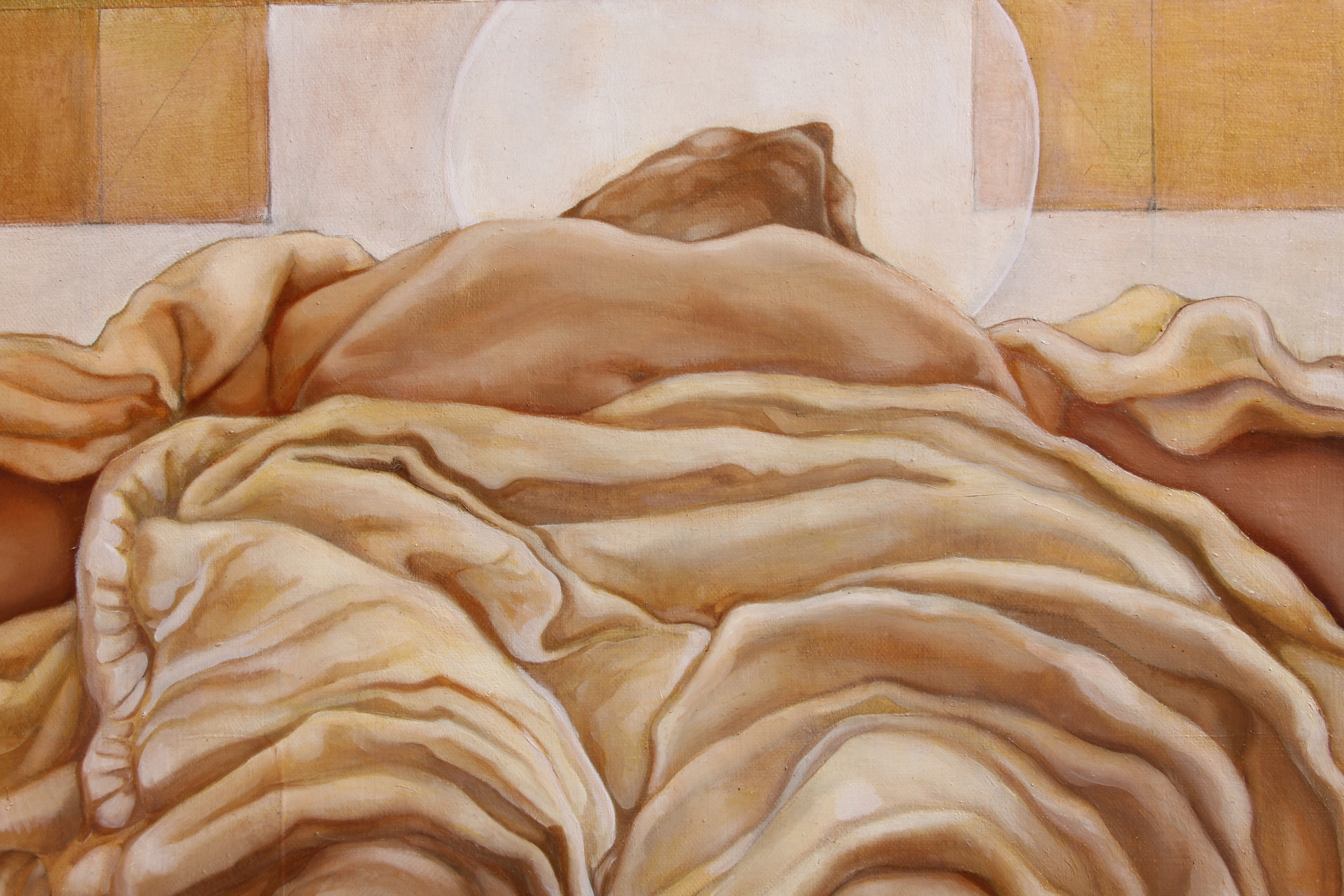

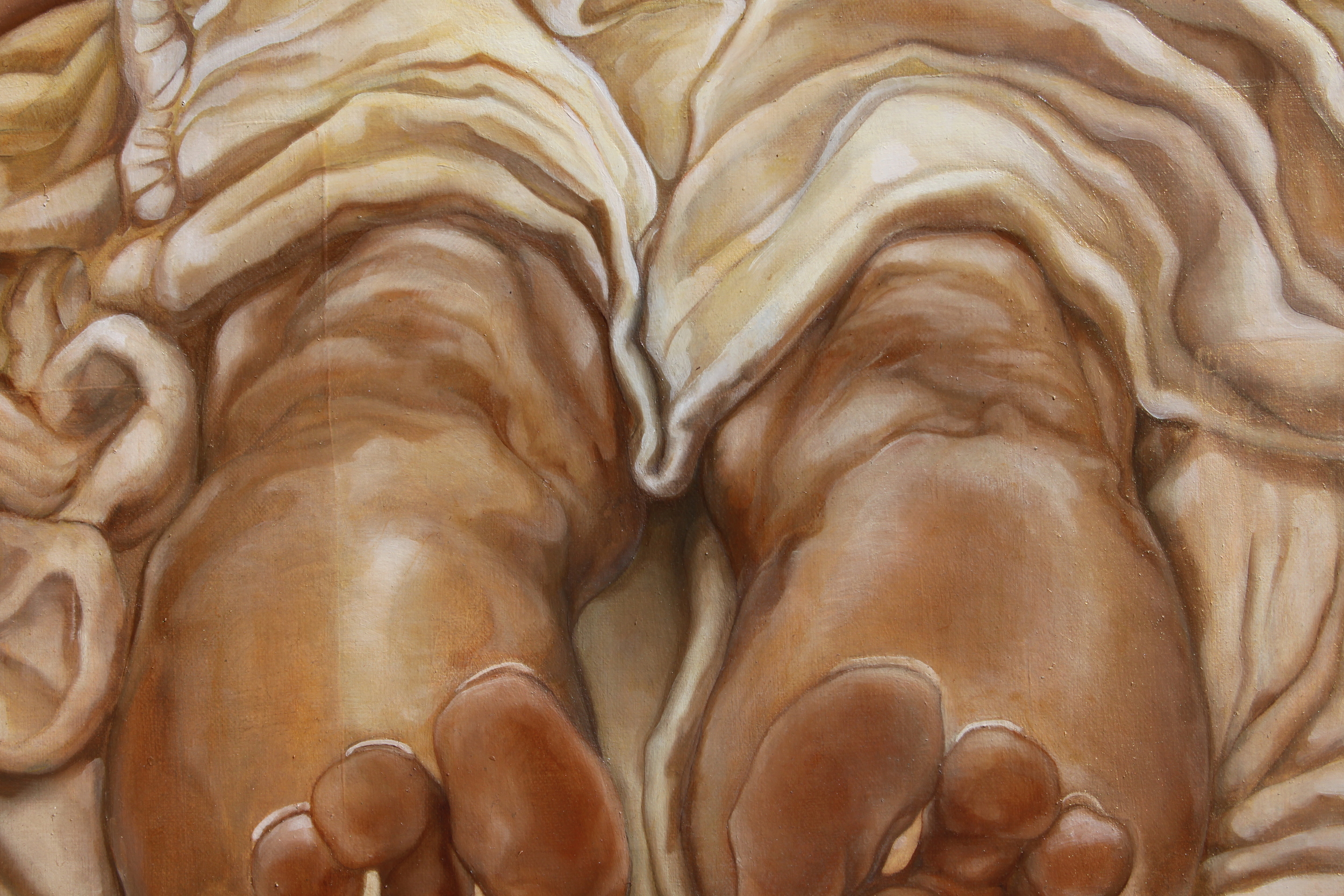
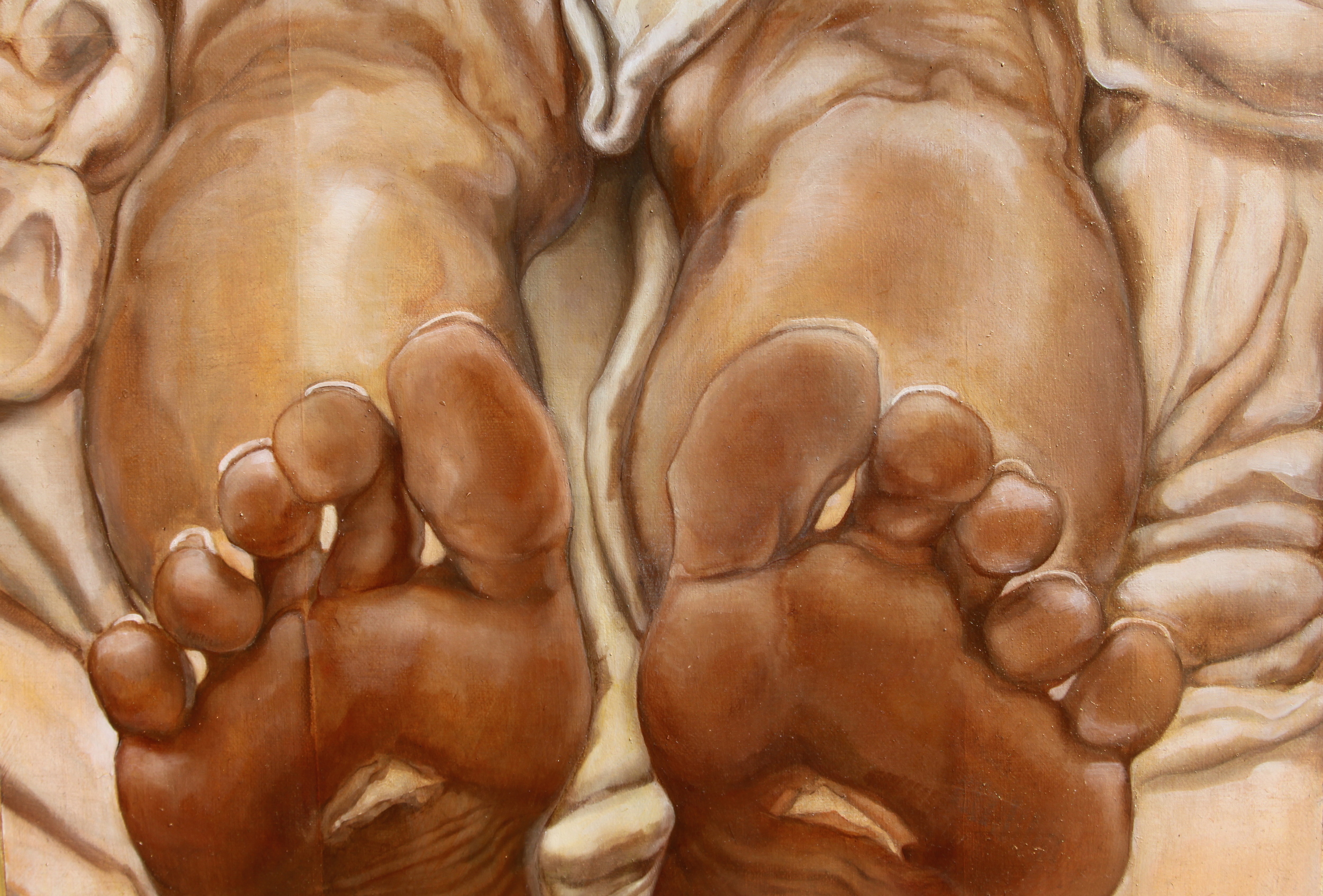
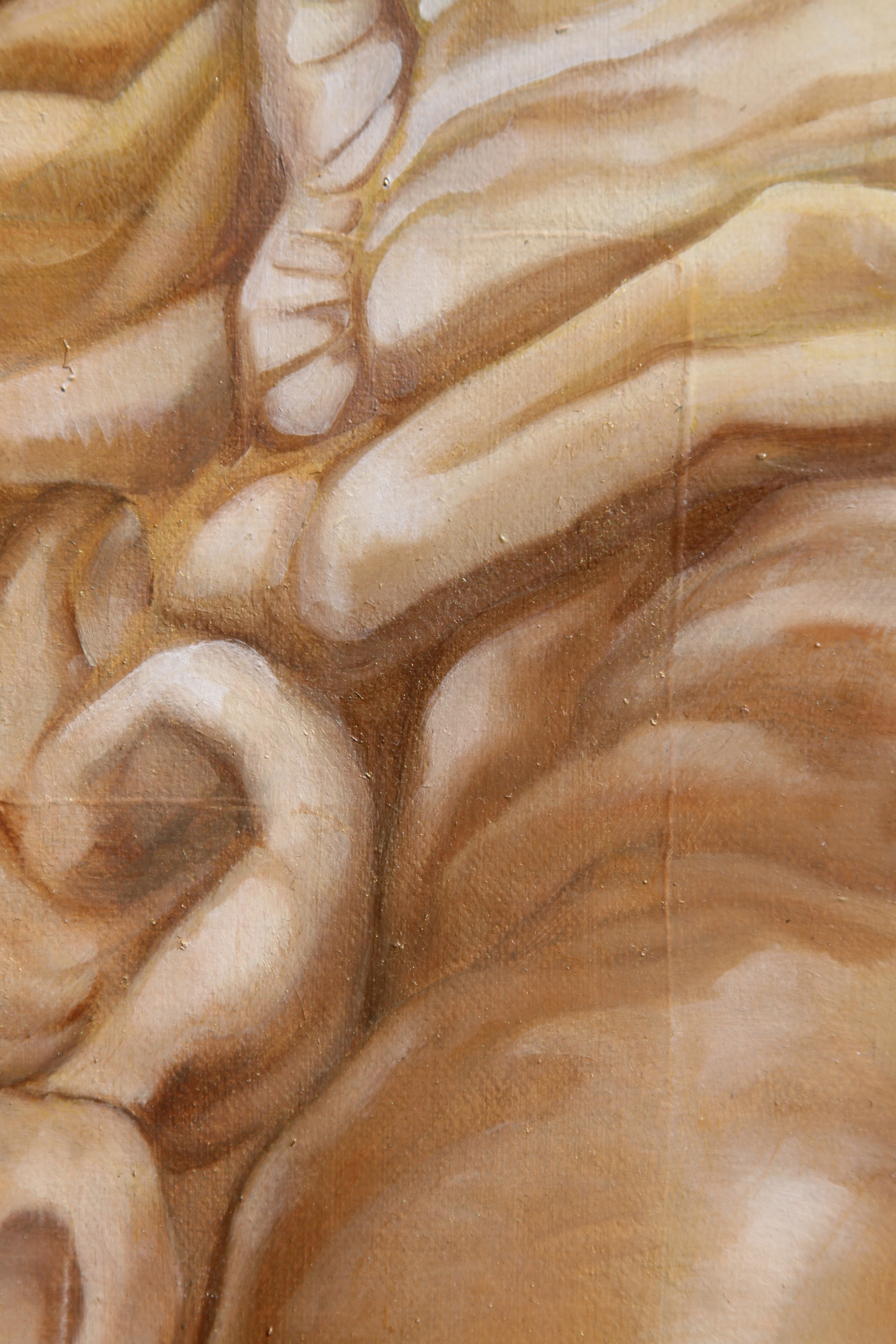

Painting: Oil and acrylic on canvas, 16" x 20"
Frame: Metal and acrylic, 23.75" x 28"
2012
“I am the vine; you are the branches. Whoever abides in me and I in him, he it is that bears much fruit, for apart from me you can do nothing”
Vines adorn the frame of this painting, representing the intimate union the church shares with Christ through the Lord’s Supper. The branches twirl around the vine, bearing fruit, so that others may live and abide.
In the center is Jesus Christ, a golden cross superimposed over his body. Layers of crosses radiate from Him; His burial cloths quiver with light. Around His head shines the rising sun, as He is being resurrected. Breath re-enters His body as He awakens inside of the tomb.
In traditional imagery, the resurrected Christ floats in midair above the tomb. He is wrapped in a cocoon of floating fabric, ready to burst forth in victory over death. These burial cloths encapsulate Christ as chrysalis.
I Am The Resurrection
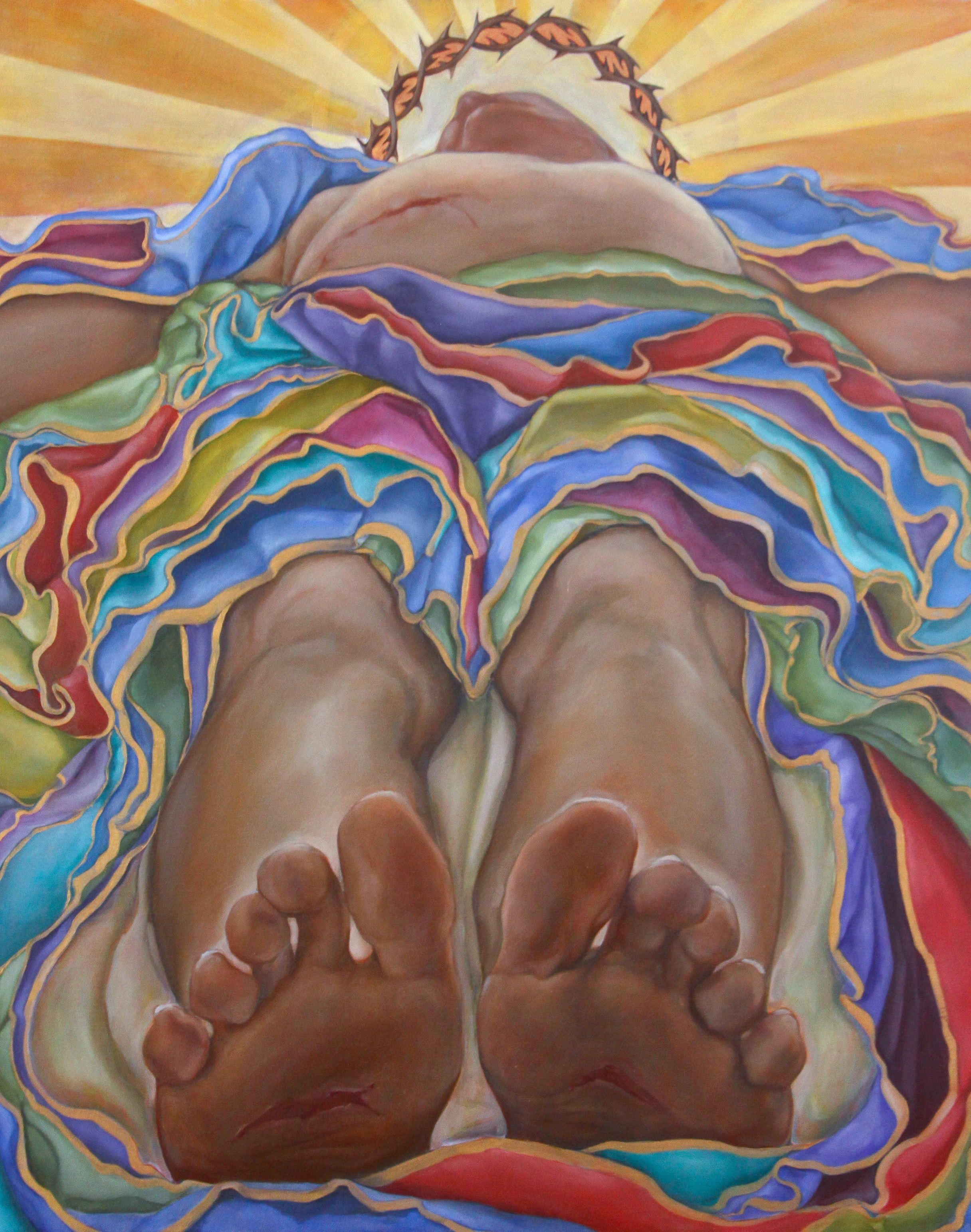
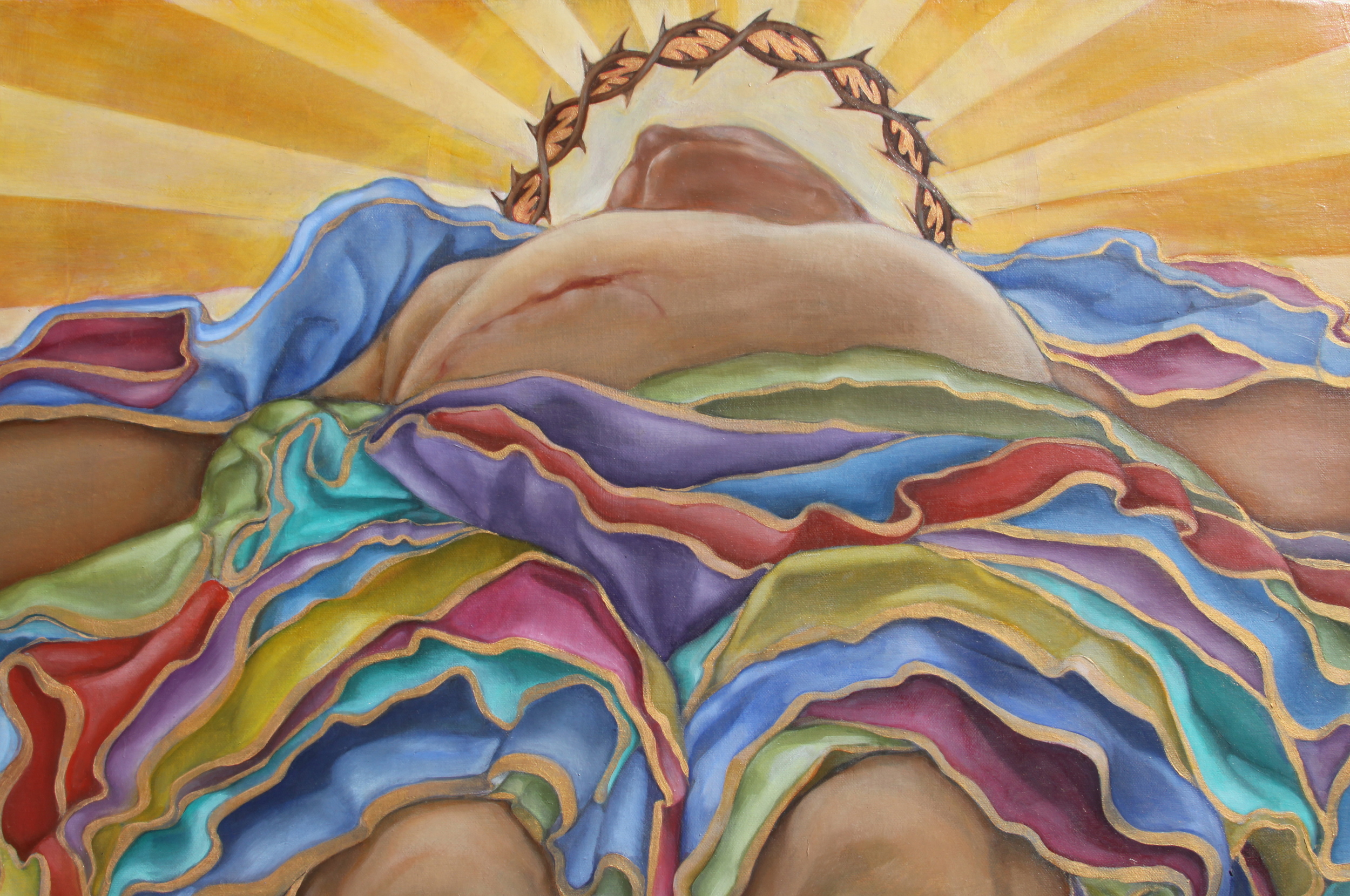
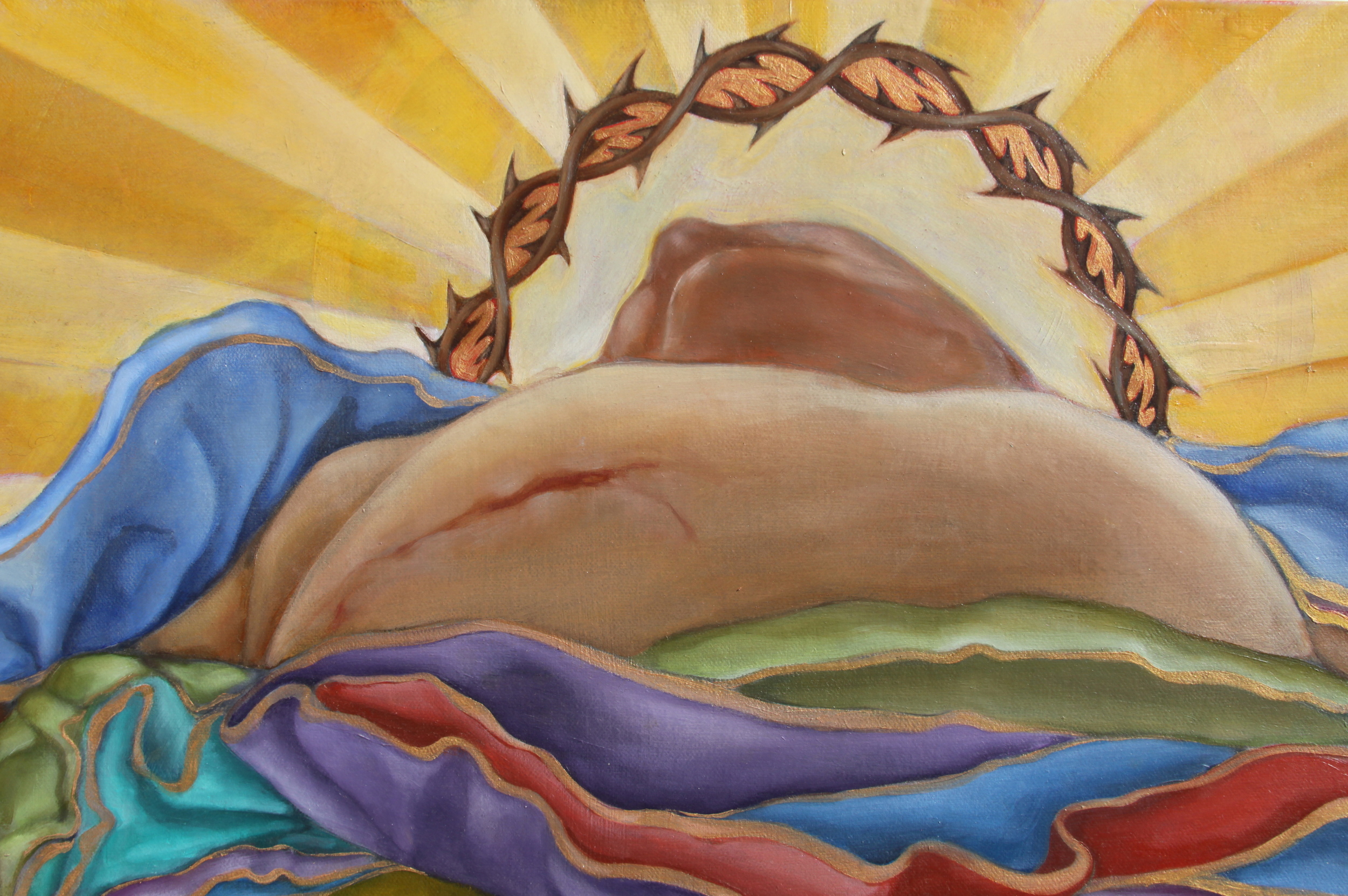

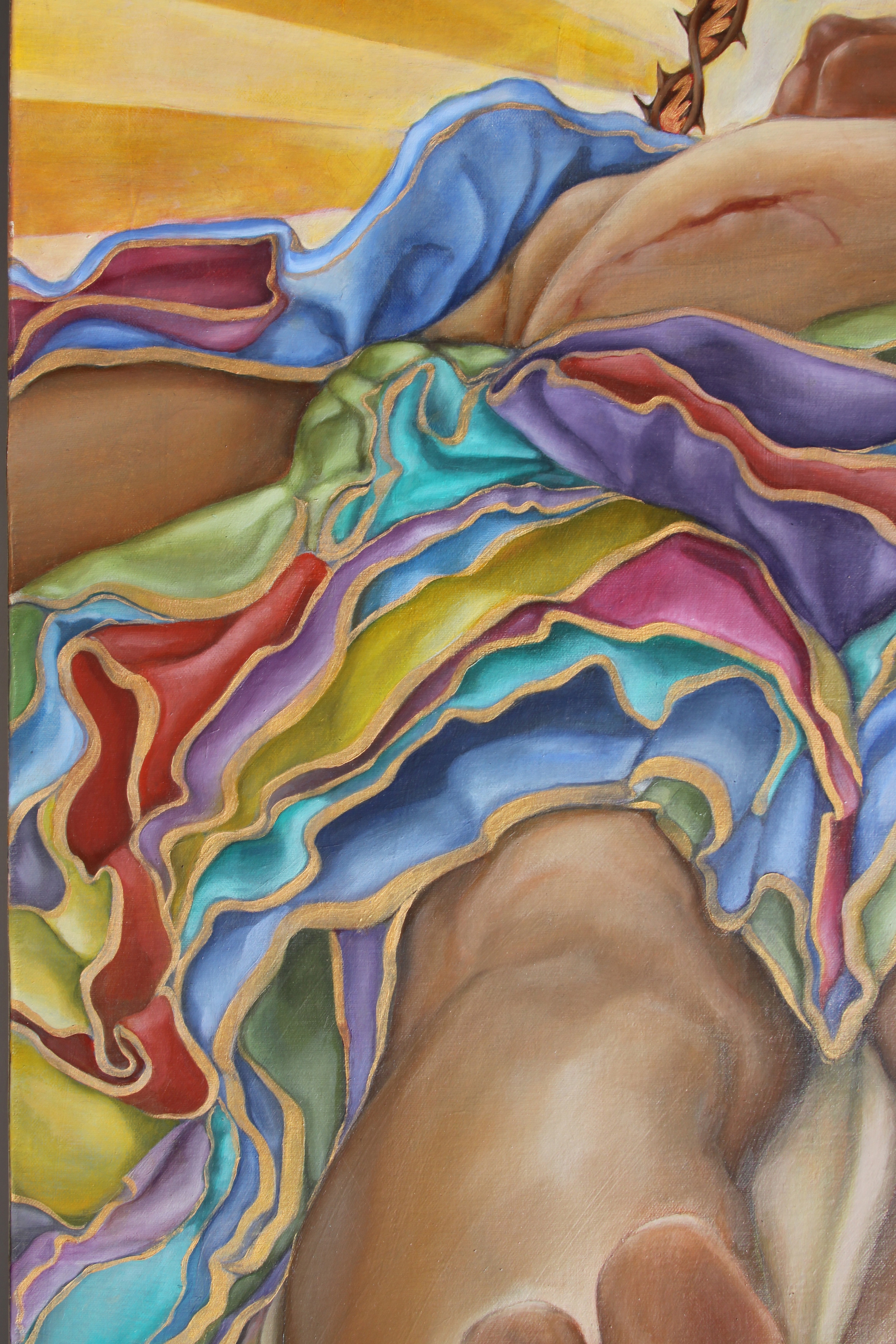

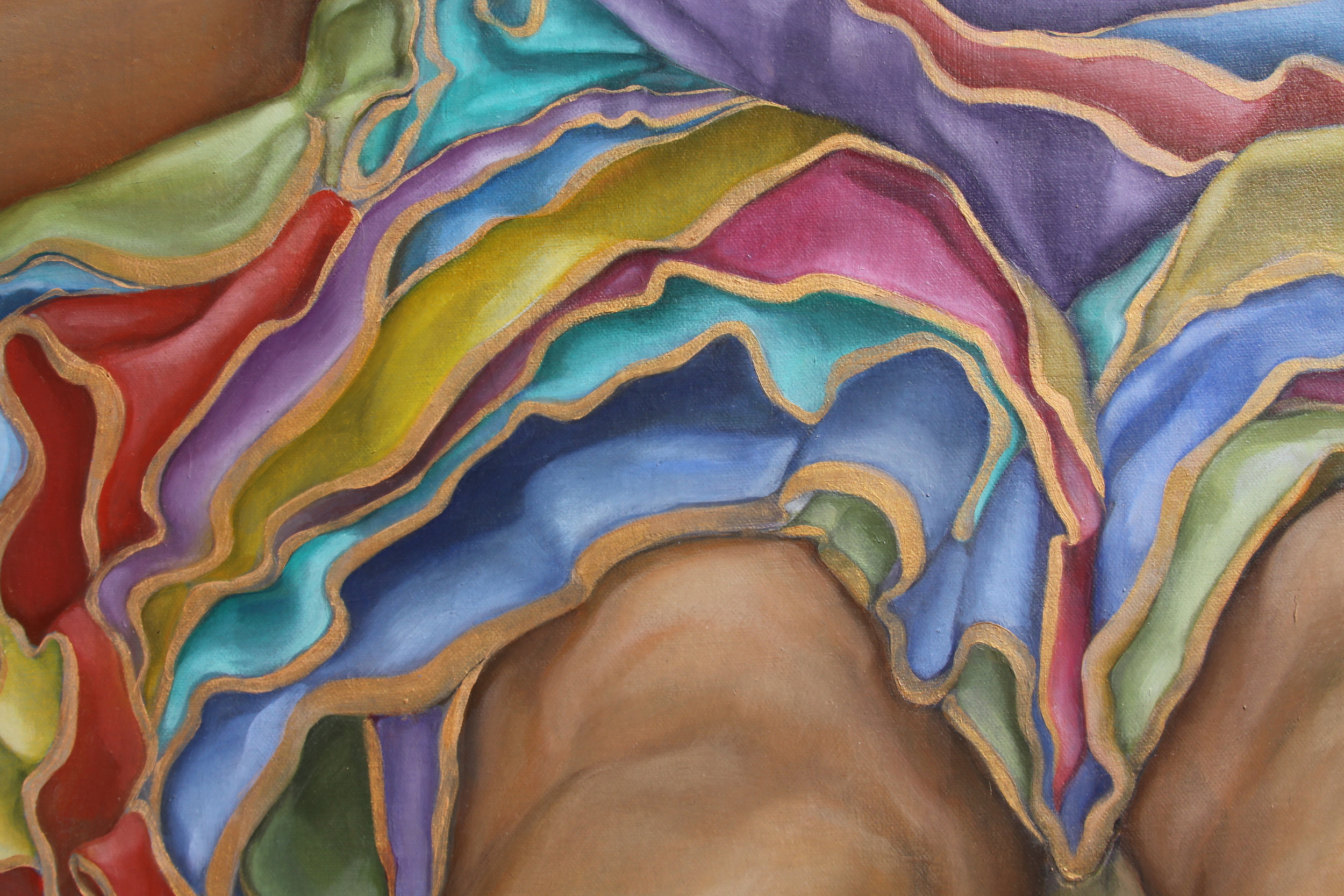
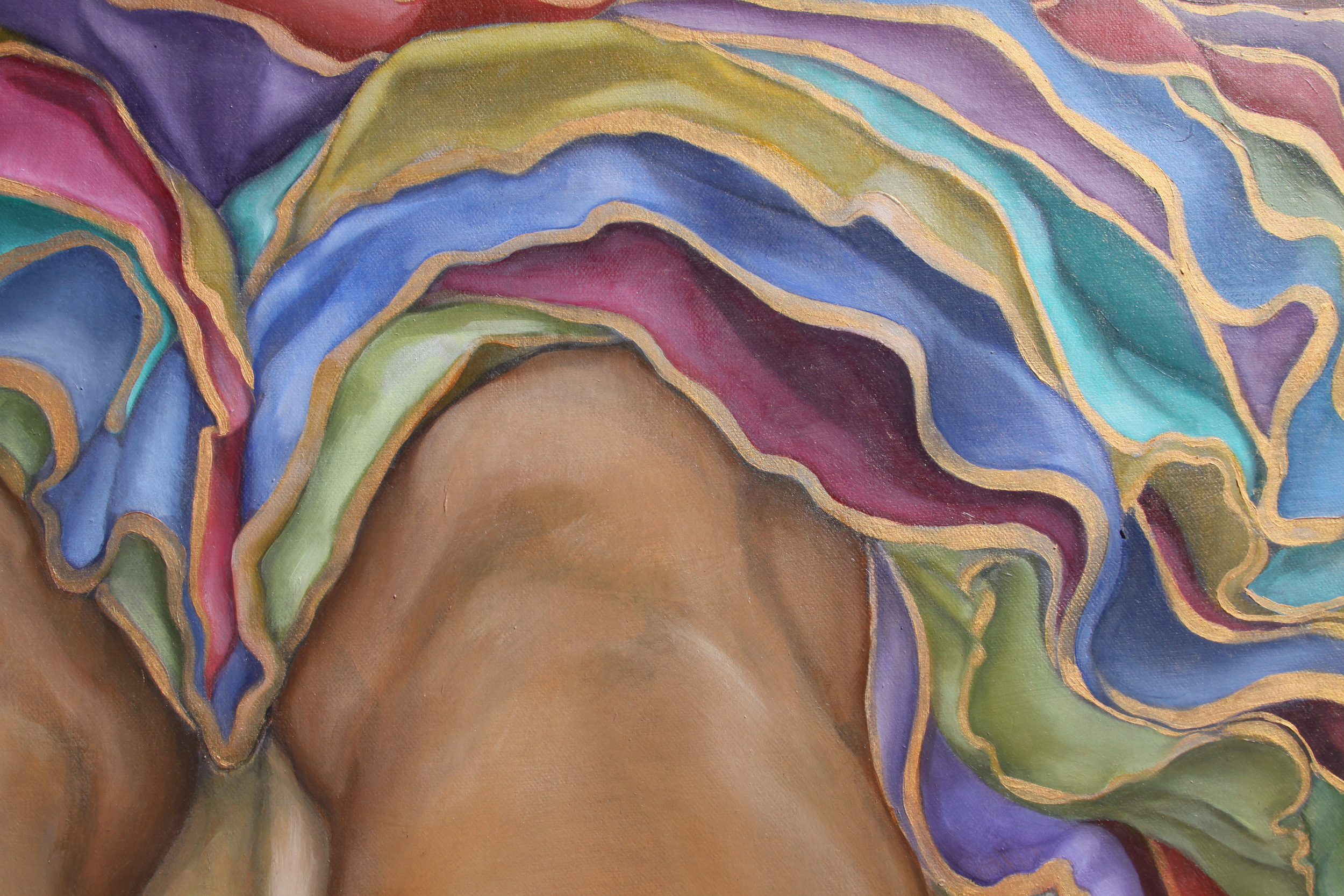
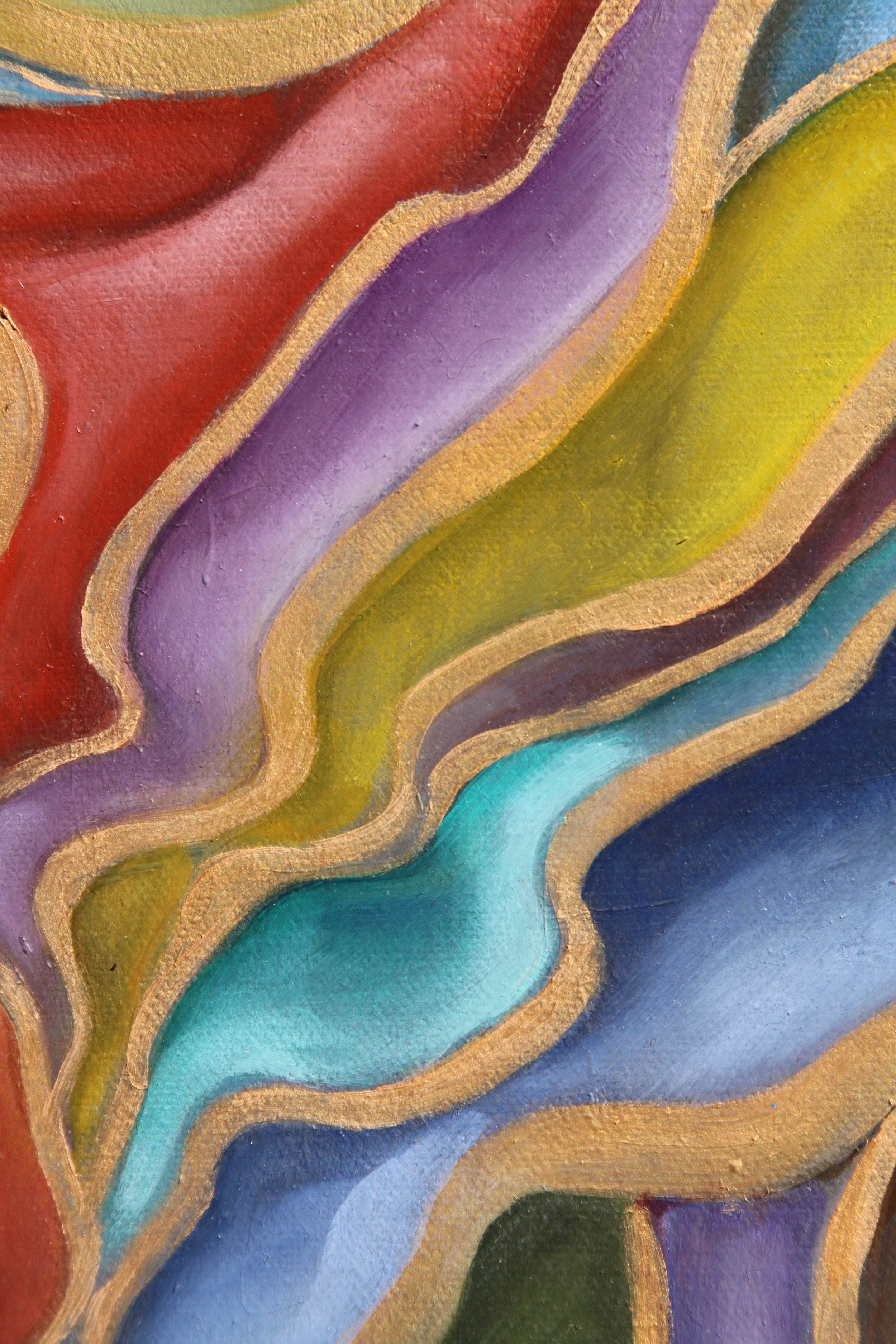
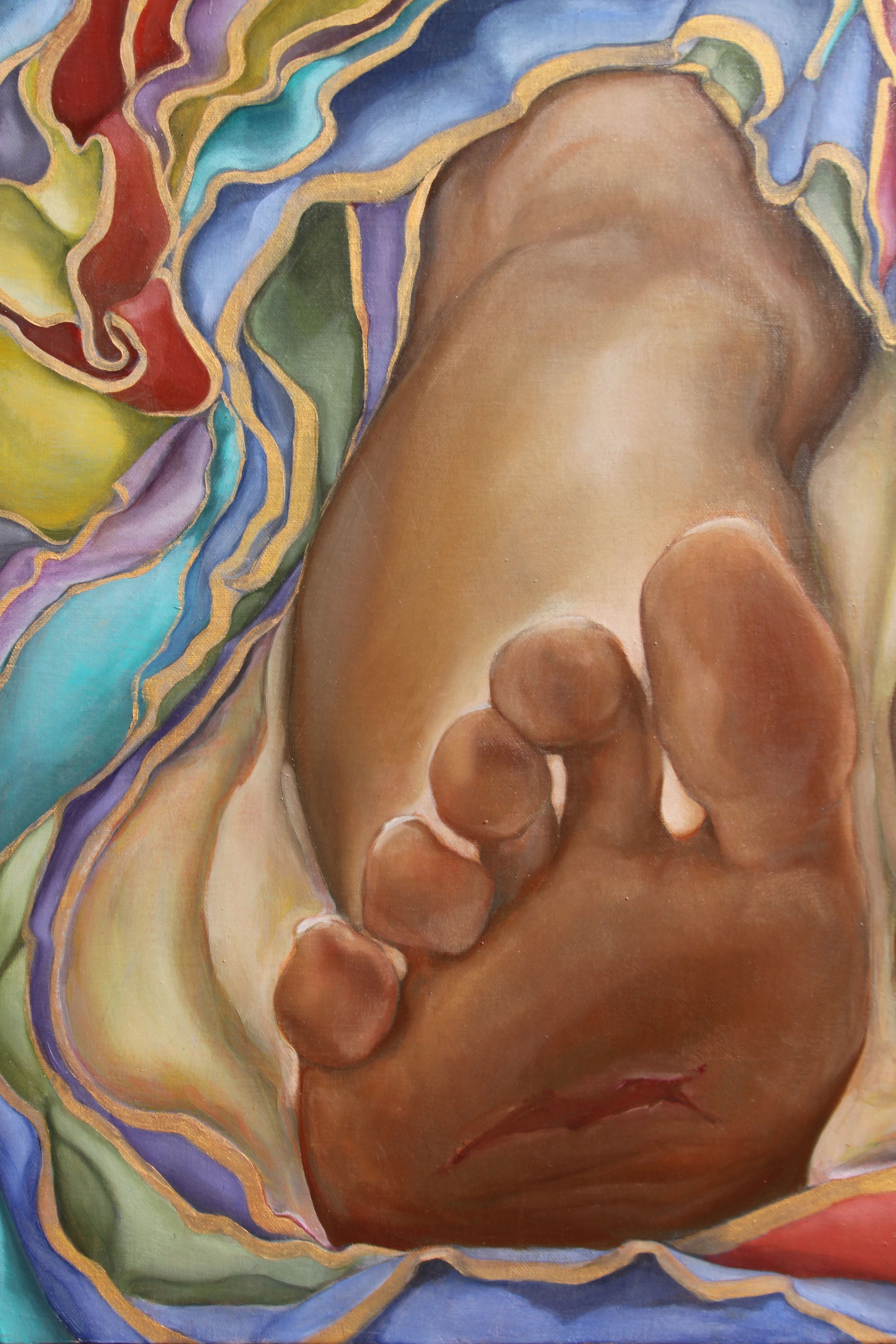
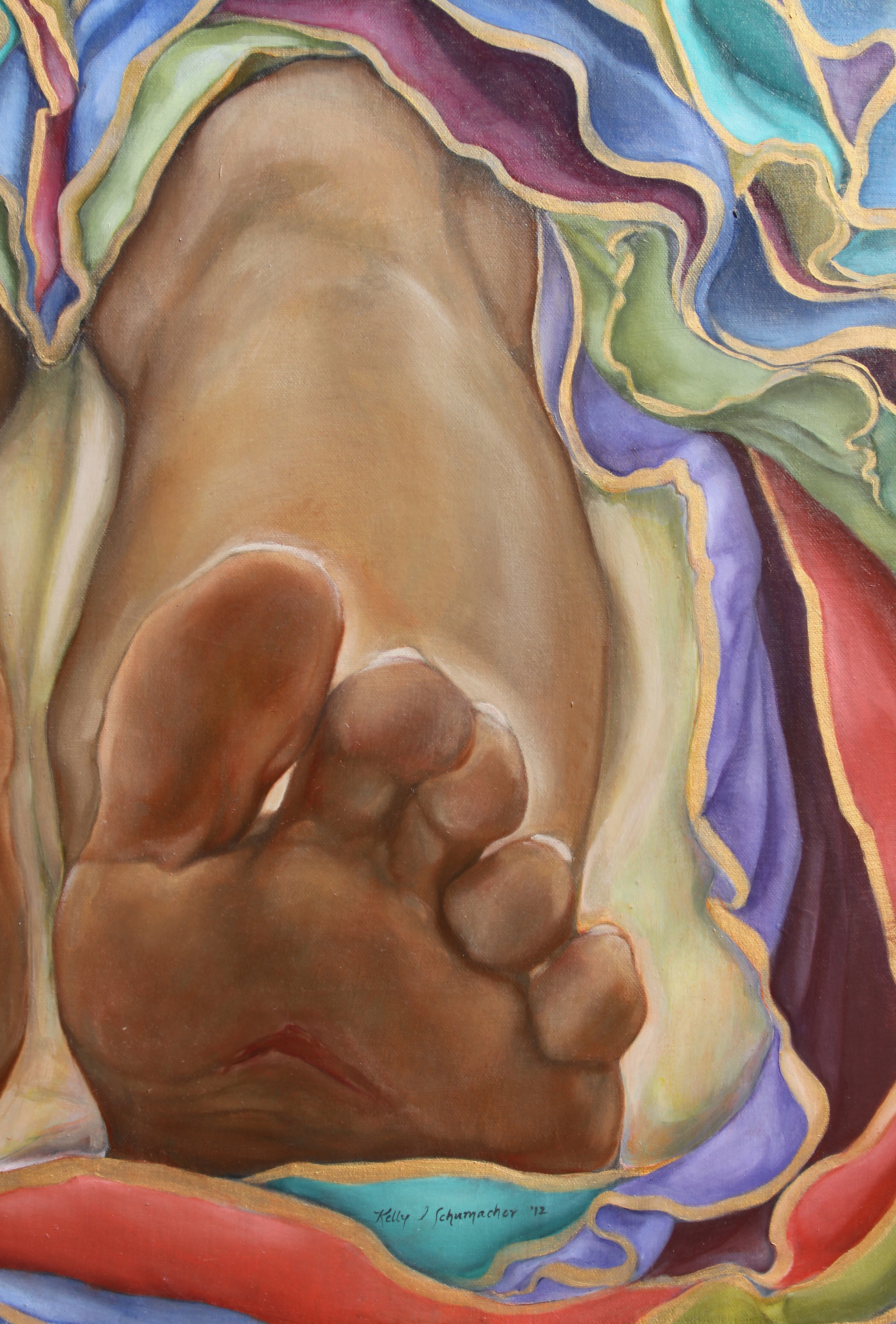
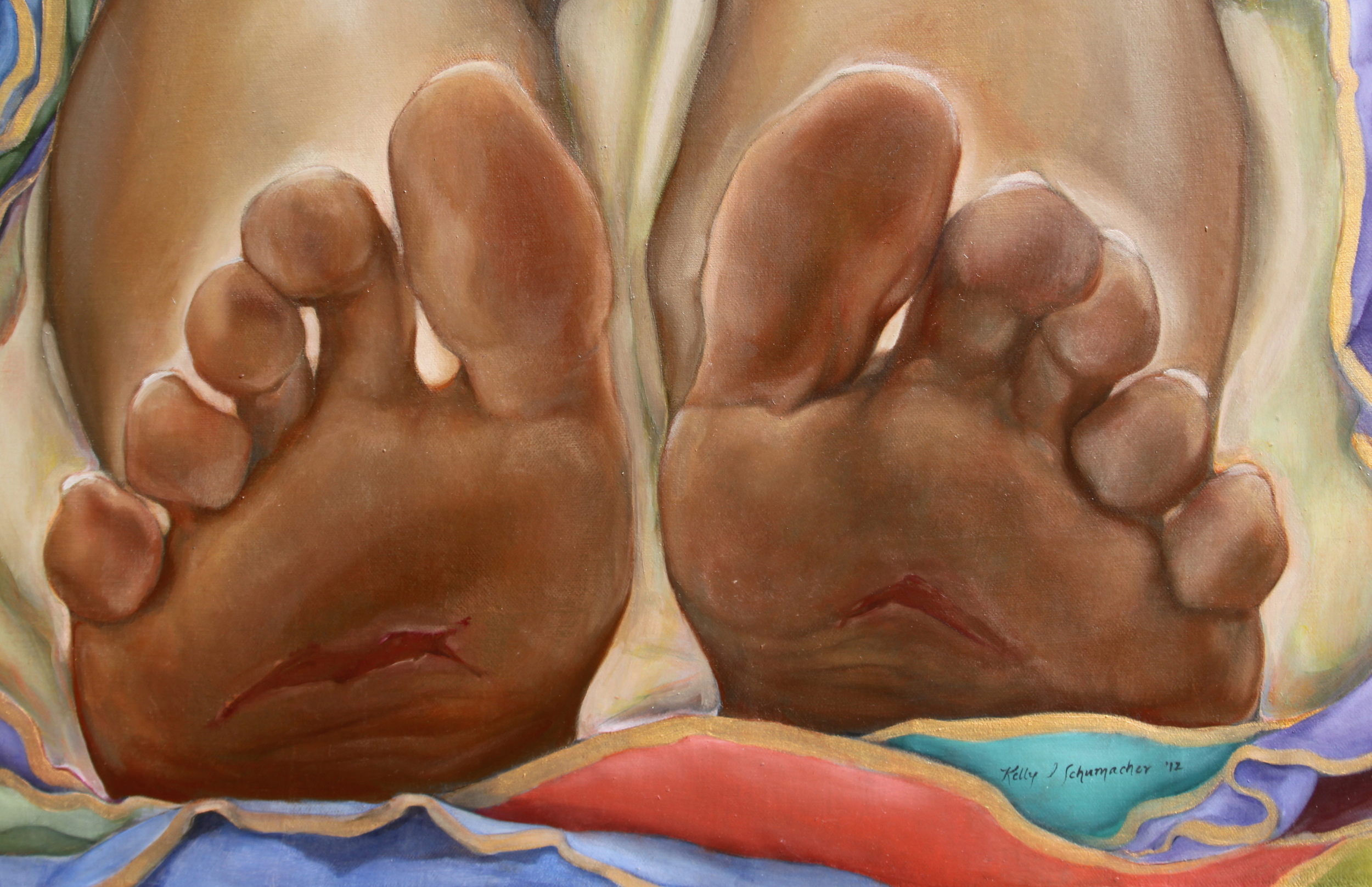
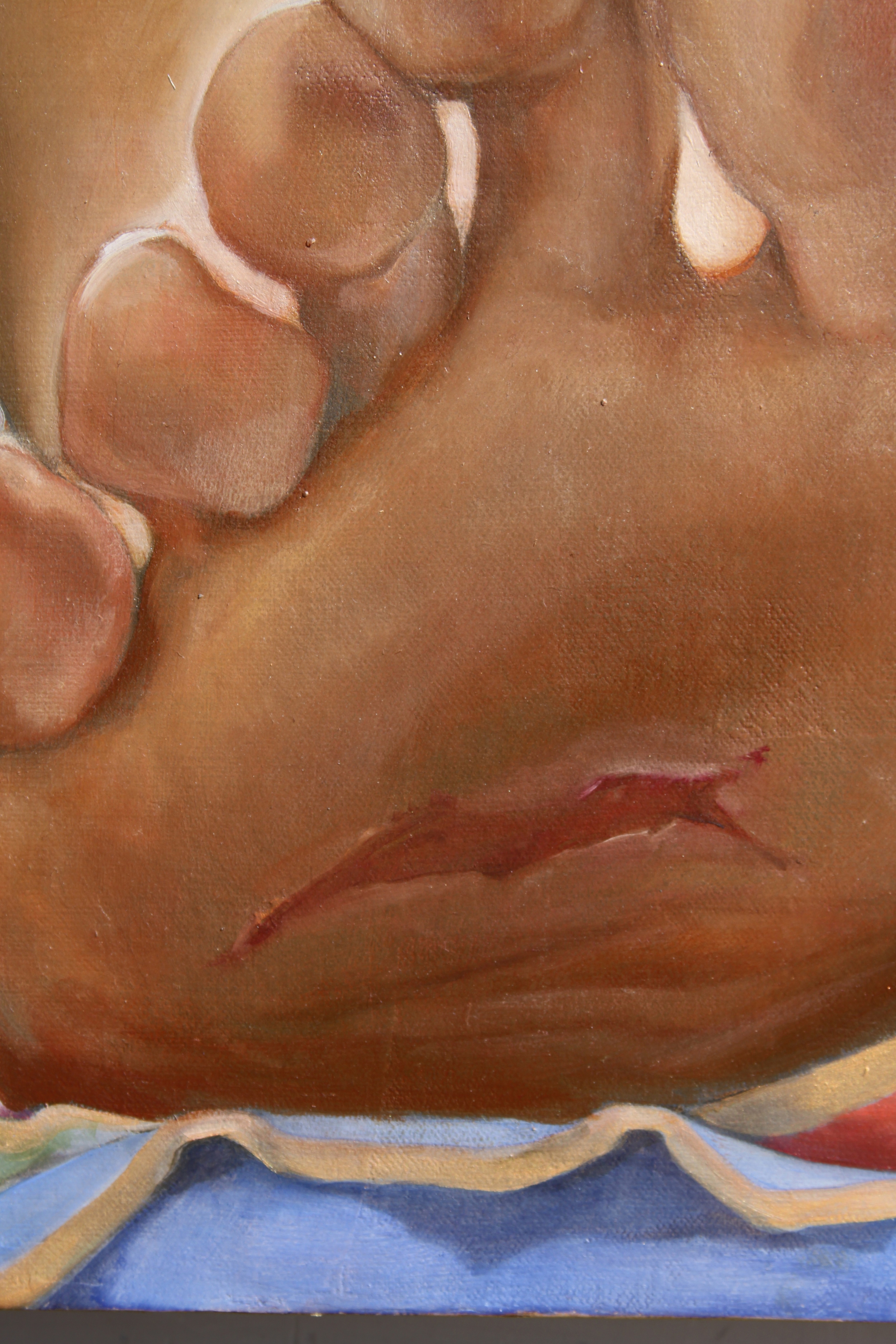
Oil on canvas, 23.5" x 30", 2012
This painting is based on a combination of Old Testament and New Testament references. The garment our Lord is wearing is full of colors. God sent Noah a rainbow as a sign of His covenant to never destroy the earth by water again. Jacob gave Joseph a coat of colors as a gift to demonstrate his favor.
In traditional Christian iconography, the resurrected Christ waves a victory banner as He steps forth from the grave. In this interpretation, Christ wears the victory banner. His head is covered with a crown of thorns, transformed into a halo. Light beams project how Christ’s suffering brought good to all mankind.
The view with which we see Jesus Christ is not the face, but the feet. His face, His full glory, is hidden from our eyes. Jesus descends into our human condition, fully embracing His humanity, with the feet as the lowest part of man.
Zurbaran Sketch

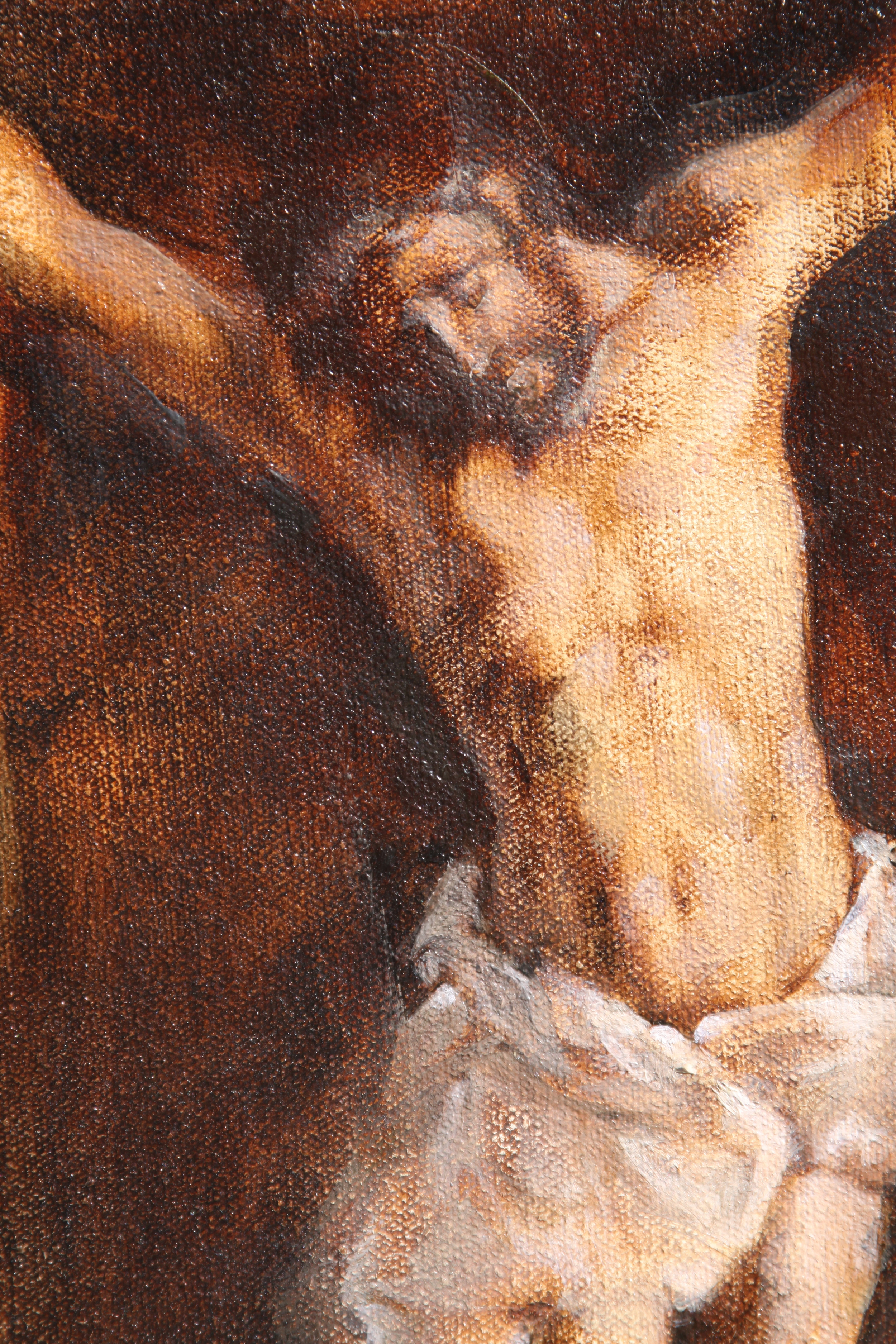
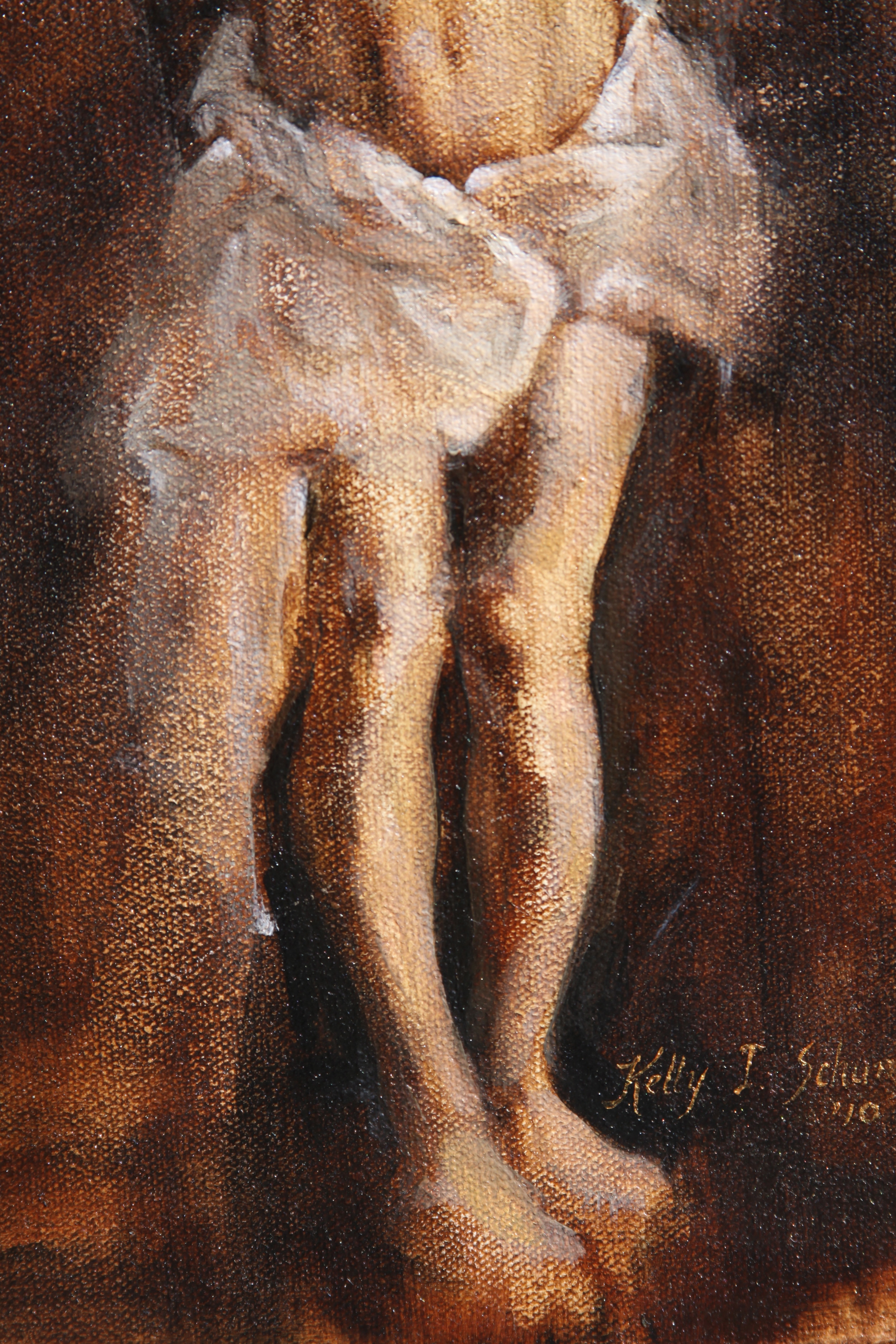
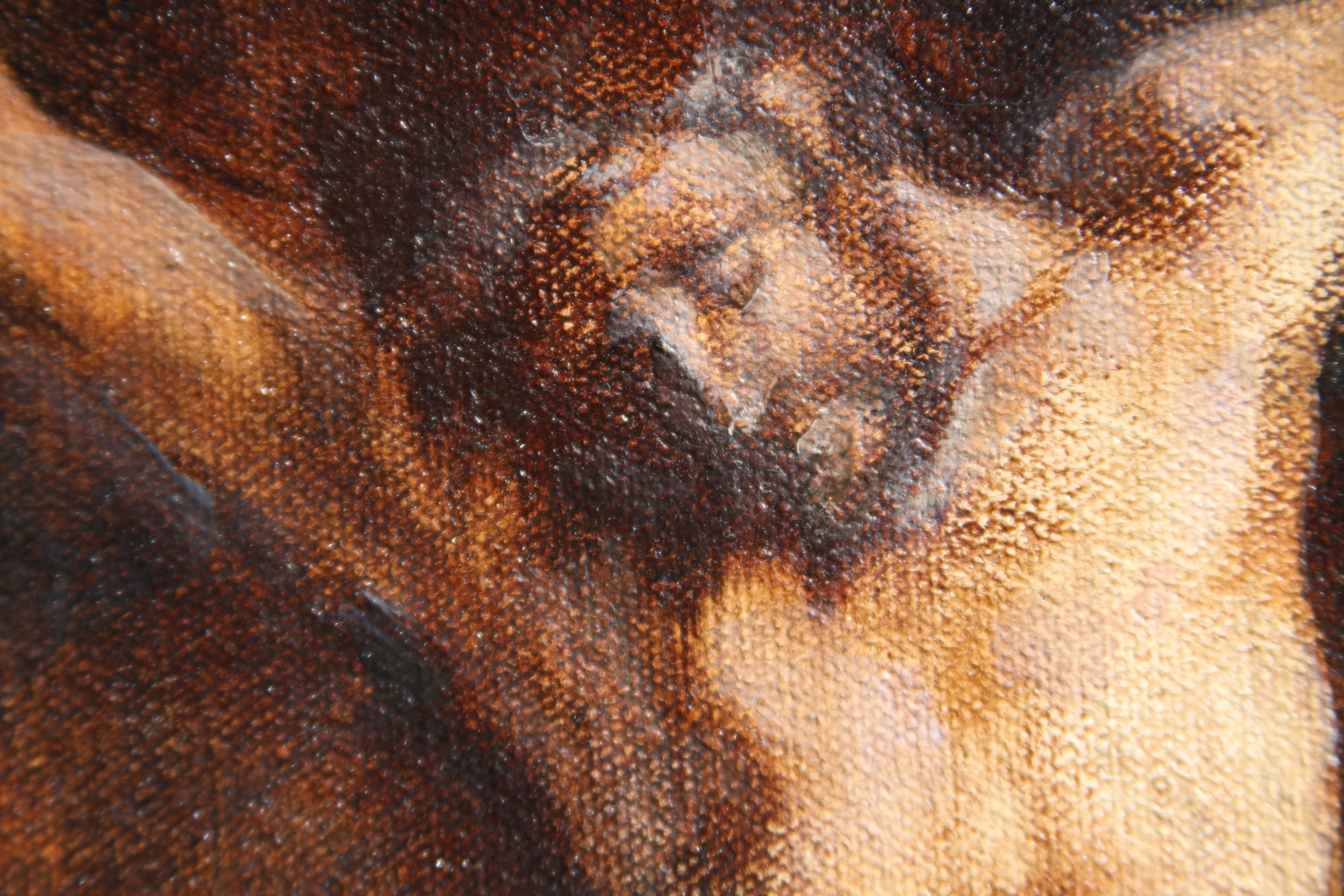
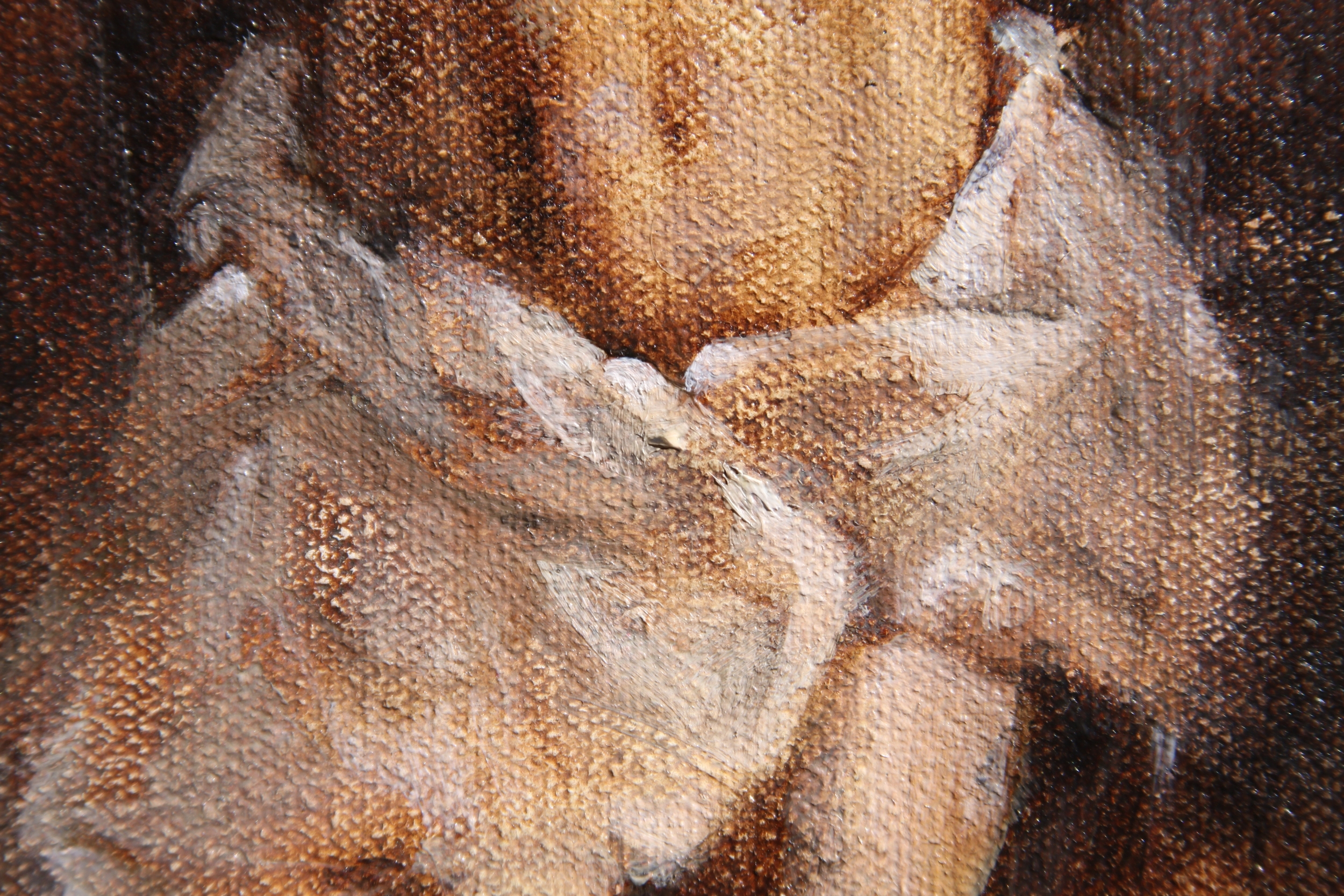
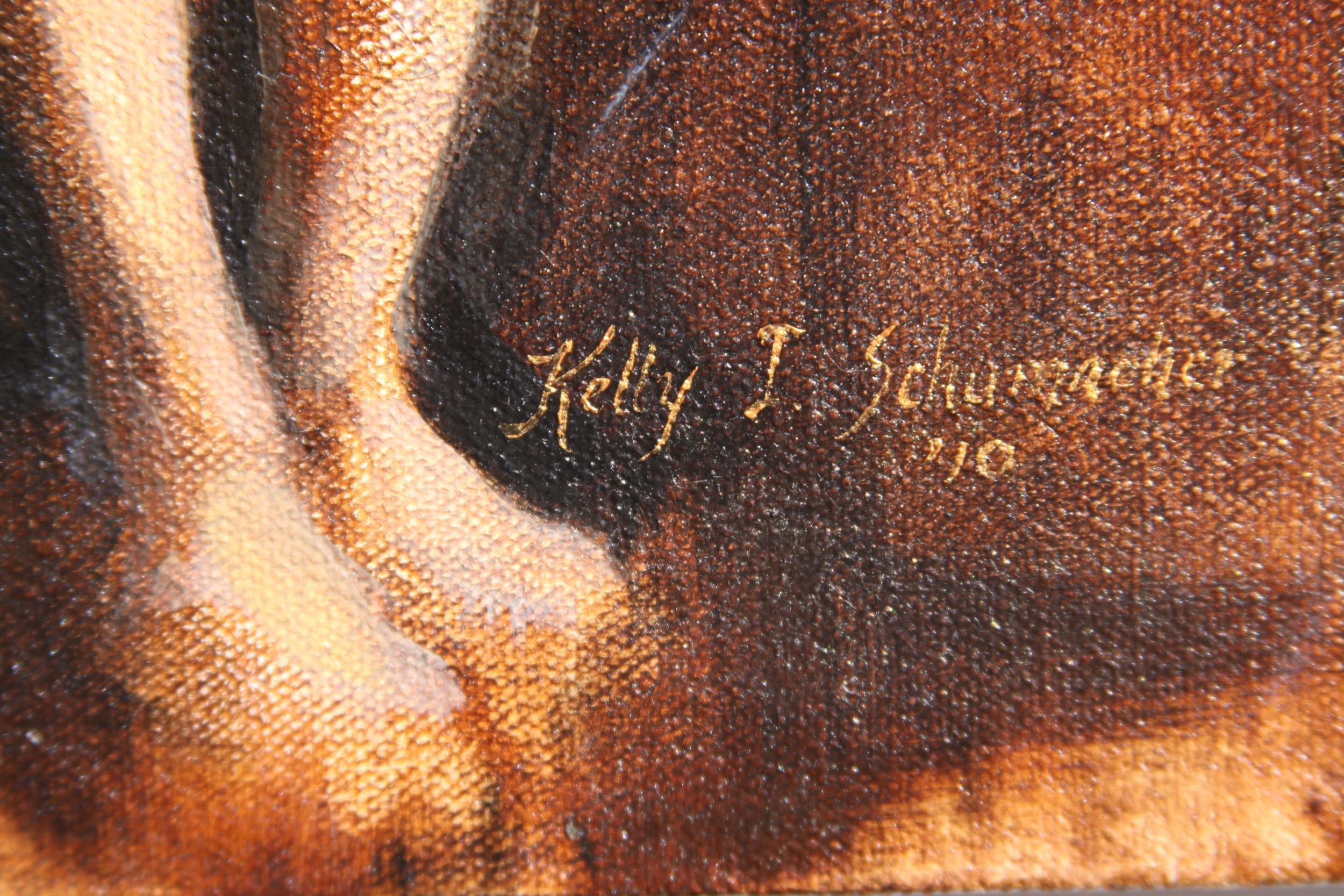
Oil on canvas, 10" x 14", 2010
In centuries past, crucifixions were hung in the home as visual reminders of Christ’s sacrifice on the cross. They brought comfort to Christians who recognized that God poured out His wrath upon His son, not us. This does not free Christians from suffering, but we know that God promises to work all things for the good of those who love Him. Through the lens of the cross, suffering has an eternal purpose. It becomes an opportunity to be conformed into the image of Jesus Christ.
Francisco Zurbaran, a Spanish painter during the Counter Reformation, experienced much suffering in his life. His crucifixion paintings are profoundly powerful, as he must have sought great comfort there from his griefs. This image is a small study based on his painting that hangs in the Art Institute of Chicago.






